In 1988 when the VN Commodore came out, I was working in a medium-sized town in New Zealand that will remain nameless. The local Ford dealer bought a brand-new VN Commodore, and told the locals via newspaper and radio ads to ‘come and drive the Commodore, and then the EB Falcon’ to compare them.
The sales gimmick backfired as after driving both cars, most people went off and bought a new VN Commodore.
That line of Commodore is now history. In its place, we have the all-new ZB Commodore – now made in Germany.
Is the new Commodore as ground-breaking as the VN was (for a Holden) when it came out? A few weeks with the RS-V V6 AWD model should tell all.
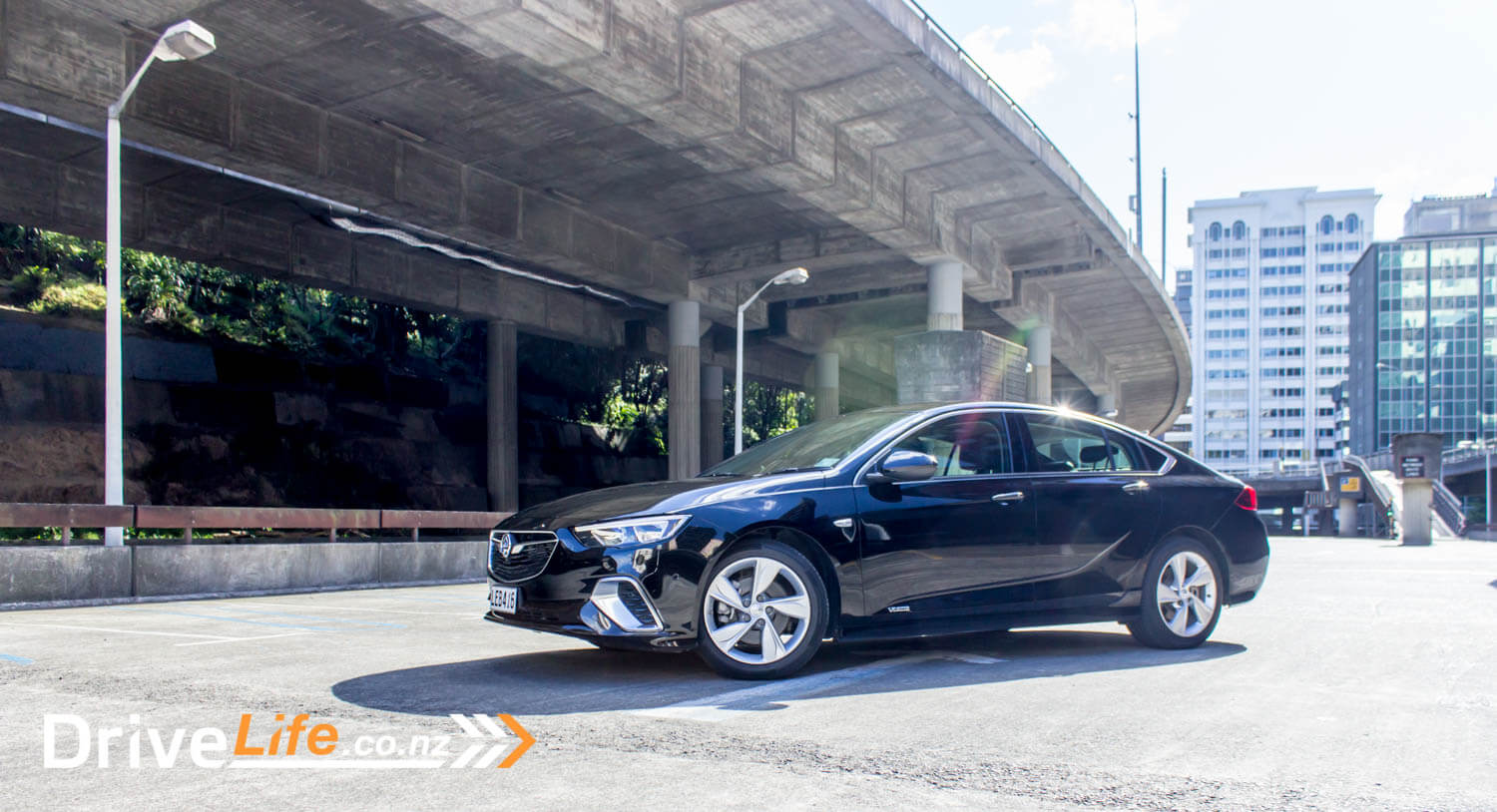
What’s In The 2018 Holden Commodore Range?
There’s a good range of Commodores to choose from, with 4 distinct models.
- LT – with either a 2.0-litre turbo petrol ($45,990) or 2.0-litre turbo diesel motor ($48,990)
- RS with only the 2-litre turbo petrol engine ($49,990)
- RS-V with a 3.6-litre V6 petrol engine and AWD ($58,990)
- VXR with the same engine and also AWD ($67,990)
Interesting to note that the new car is $4,000 less (in the base model LT) than the one it replaces.
The 2.0-litre petrol motor puts out a decent 191kW of power and an impressive 350Nm of torque, while the V6 manages 235kW/381Nm.
All have a nine-speed automatic gearbox and all are available with either a liftback or sportwagon body, except for the VXR which is liftback only. If you want the Sportwagon body, you’ll pay a $2,000 premium for this.
Standard equipment is reasonable, with all models having Apple CarPlay/Android Auto capability, front and rear park sensors, reversing camera, LED DRLs, automatic headlights, auto wipers, advanced park assist, the ‘Holden Eye’ system which incorporates Autonomous Emergency Braking with Pedestrian Detection, Lane Departure Warning, Lane Keep Assist, Forward Collision Alert, and a Forward Distance Indicator. 17” alloys are also standard, along with cruise control/speed limiter, push-button start (with remote start), dual zone AC, LED tail lamps, an 8-way power driver’s seat, a 7” colour touchscreen and 7-speaker audio system.
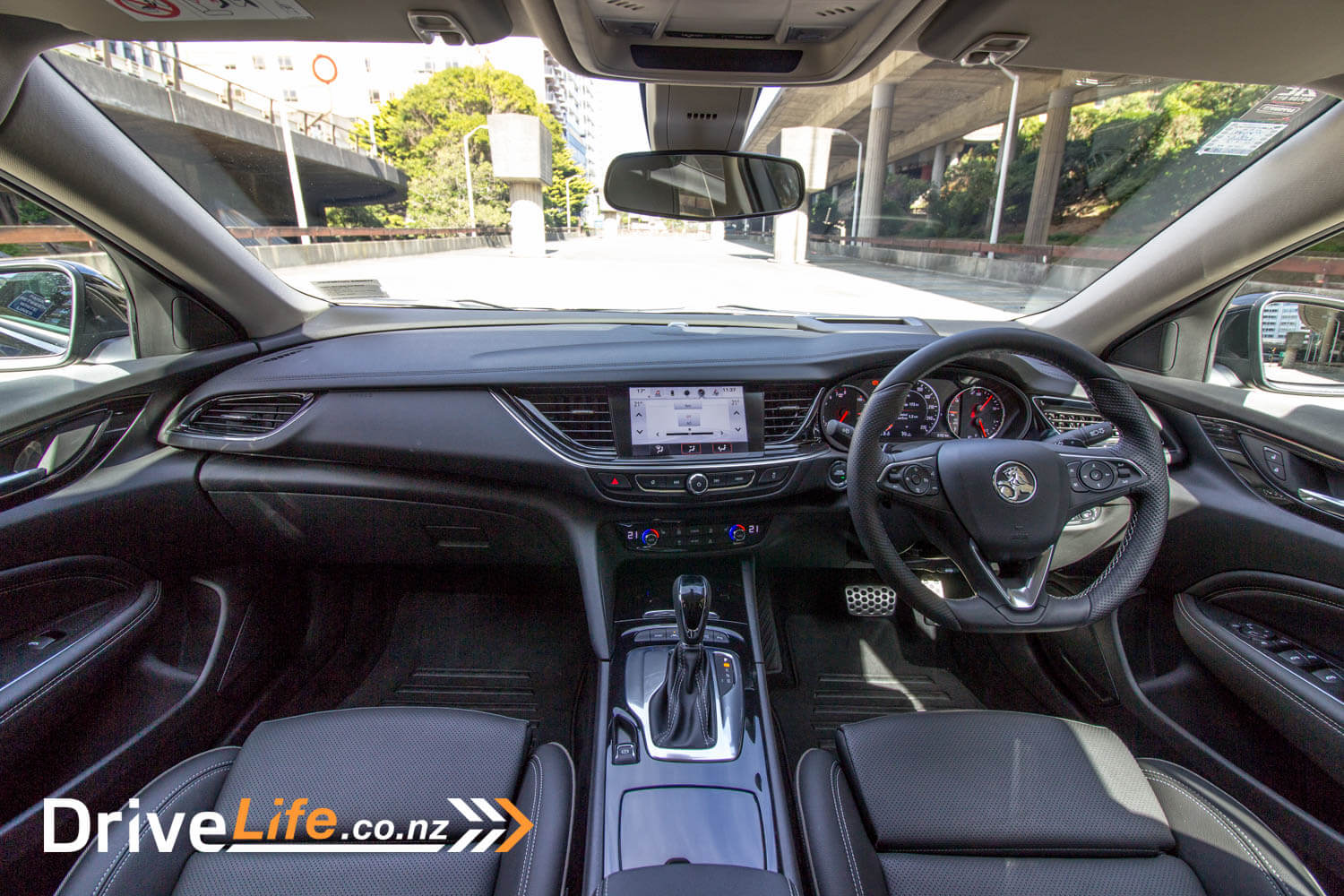
The RS is a slightly sportier model, which adds 18” alloys, a sports body kit, sports cloth seat trim, sports front seats, sports steering wheel, rear lip spoiler, hands-free power tailgate (on the sportwagon), ambient light, side blind zone alert and rear cross traffic alert.
For the RS-V, other than the V6 engine and AWD, you also get ‘HiperStrut’ suspension, leather seats, heated front seats, paddle shifters, colour heads-up display (HUD), 8” Enhanced Driver Information Display, privacy glass (Sportwagon only), wireless phone charging, alloy pedals, 40/20/40 folding rear seats, 8” colour touchscreen, SatNav and Digital Radio (DAB).
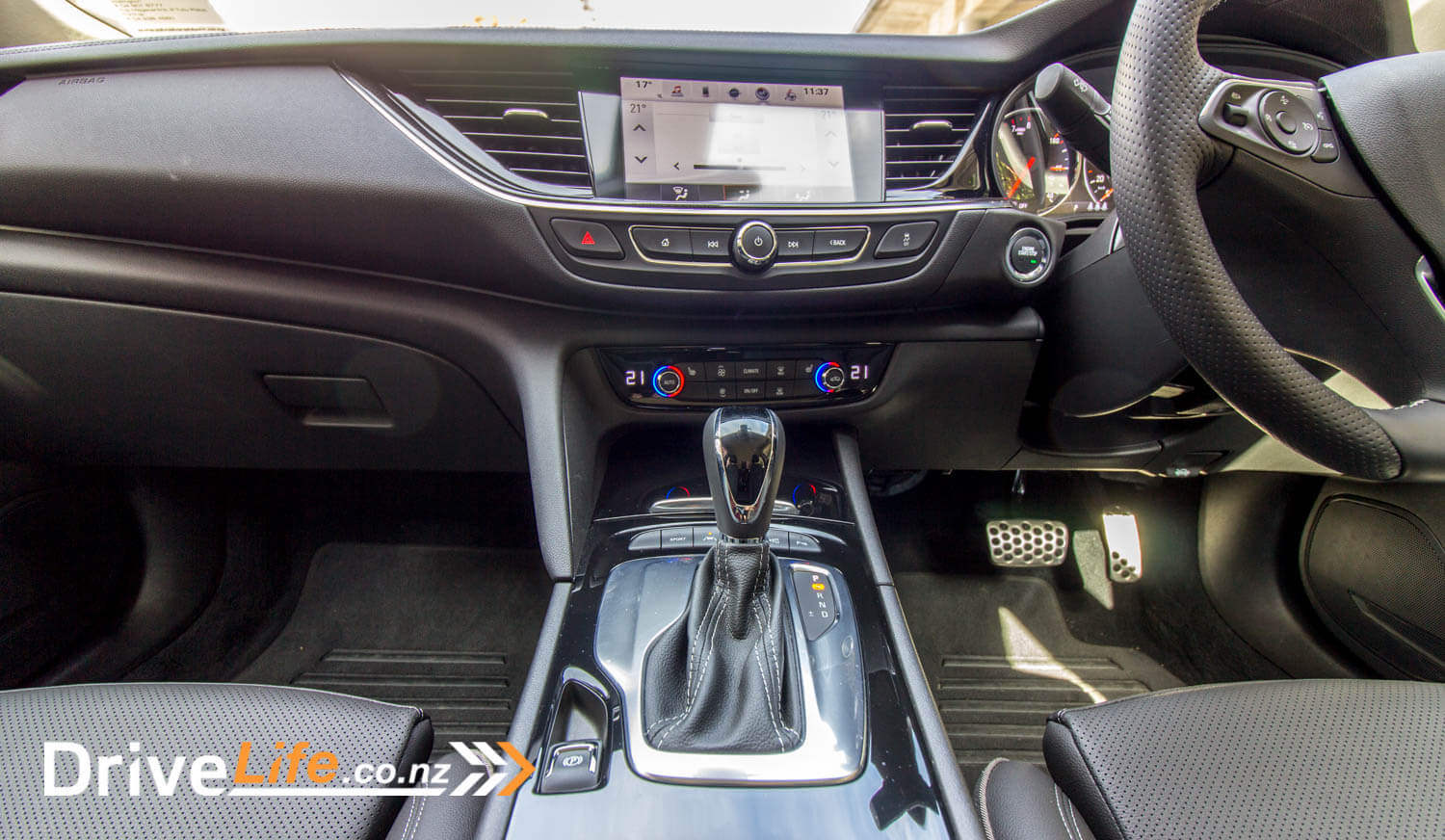
At the top of the tree is the VXR, which is purely aimed at drivers. It’s the only model to have adaptive cruise control (yes, I was shocked too), a 360-degree camera system, 20” alloys, an electric sunroof, memory for the driver’s seat/mirrors, driver and passenger seat power side bolsters, driver and passenger massaging seats, ventilated front seats, heated rear seats, FlexRide adaptive suspension, Brembo front brakes, performance seats, VXR lip spoiler and a Bose sound system. While the VXR is $9K over the RS-V, that’s quite a lot of extra kit for the money.
OnStar capability is being rolled out in New Zealand with the new Commodore. This product has been in other countries (notably US-wide) for a number of years, and now GM has introduced the system to us. It uses a mixture of satellites and mobile technologies to deliver connectivity and other services to your Commodore.
OnStar is planning to offer the following services in New Zealand as a minimum:
- Automatic Crash Response
- 24/7 Emergency Services
- Stolen Vehicle Assistance
- Vehicle Diagnostics
- MyHolden Mobile Application
- Remote Start and Door Unlock
- In-vehicle 4G LTE Wi-Fi internet hotspots with ability to connect up to seven devices
In fact, GM says, “…every new Holden launched from 2019 will be connected to the internet, via GM’s unique Onstar technology.” But…it’s not available yet. Pricing is still to come, so at the moment it’s a ‘nice to have’.
Interested in your colour choices? Don’t get your hopes up. There’s just six colours to pick from; two whites, a silver and a grey, a black and a red. That’s it. Our RS-V was finished in Mineral Black, with a nice metallic fleck showing in some light.
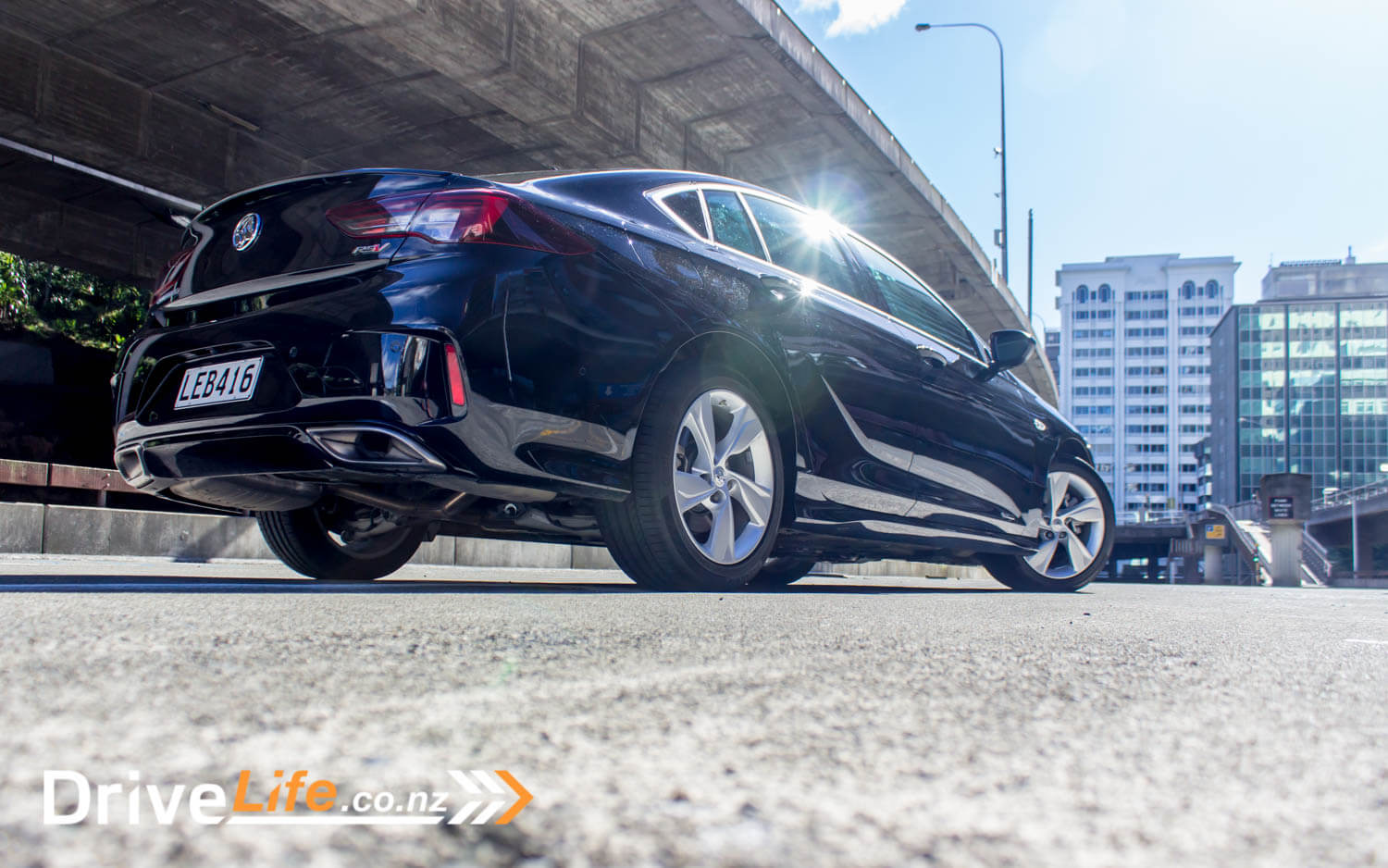
First Impressions Of The 2018 Holden Commodore RS-V
The new Commodore may be 36mm narrower and 50mm shorter than the old one, but it still has presence. Dare I say it, this is a bloody good-looking car. It’s not revolutionary, it’s not futuristic, it’s not ground-breaking, but it is well designed with just the right proportions and lines.
Over my two weeks with the VB, it really grew on me. I came to look forward to seeing it after going shopping. Side on it looks similar to a Mondeo, but that’s a compliment.
Passengers also commented on the car’s design, so thankfully it wasn’t just me.
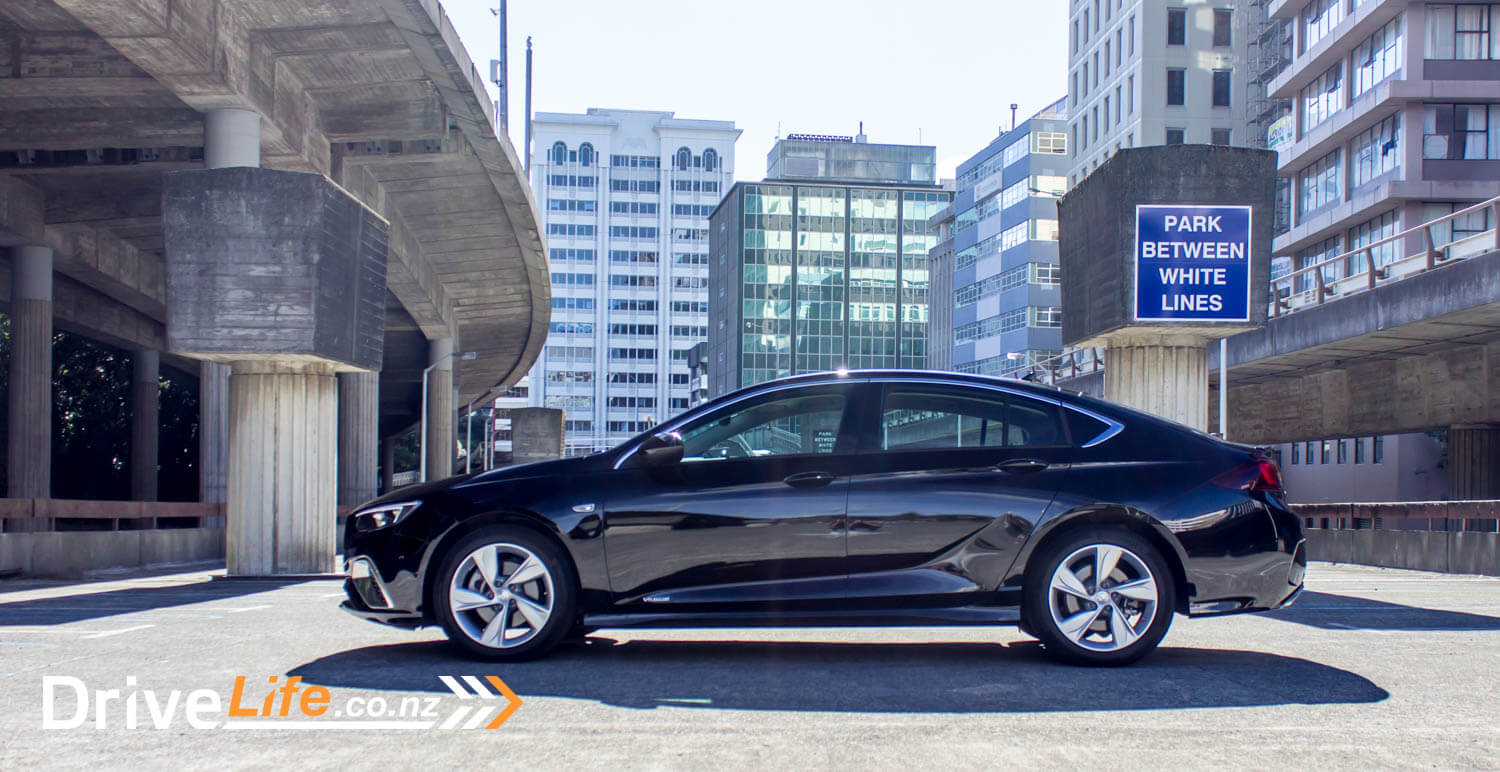
What’s The Inside Like On The 2018 Holden Commodore RS-V?
There’s black leather everywhere when you open the door, not that that’s a bad thing. The car does feel a bit plasticky from the driver’s seat. Tastefully done, but everything feels so black with only a few splashes of silver plastic trim to break it all up.
Thankfully the headlining and pillars are beige, so it’s not totally black.
Opening the centre console cubby shows a USB port for music and also the slot for Qi wireless cellphone charging – if your phone is capable. Most Qi systems are a flat pad in front of the shifter, but not on the Commodore. I’ve got mixed feelings on this; it seems like a good security system as your expensive cellphone is out of sight and also it reduces the temptation to look at your phone.
On the other hand, it’s easy to get out of the car and forget to get your phone (me, multiple times). The slot itself is a little tight when you have a battery case on your phone as I have. It fitted in, but needed a solid push to get it in there. Those with a normal case shouldn’t have a problem.
There’s a flat-bottom leather steering wheel, and it feels great to the touch. Still in the driver’s seat, there’s a great heads-up display (HUD). More on this later.
The gauge cluster has a good set of gauges; volts, fuel, engine temp and oil temp. Weirdly, oil temp and volts are shown in the middle of the dash, while fuel and engine temp are off to the side. I would have thought that fuel and engine temp would take pride of place. Still, so many cars we test only have a fuel gauge now it was nice to see some extra ones.
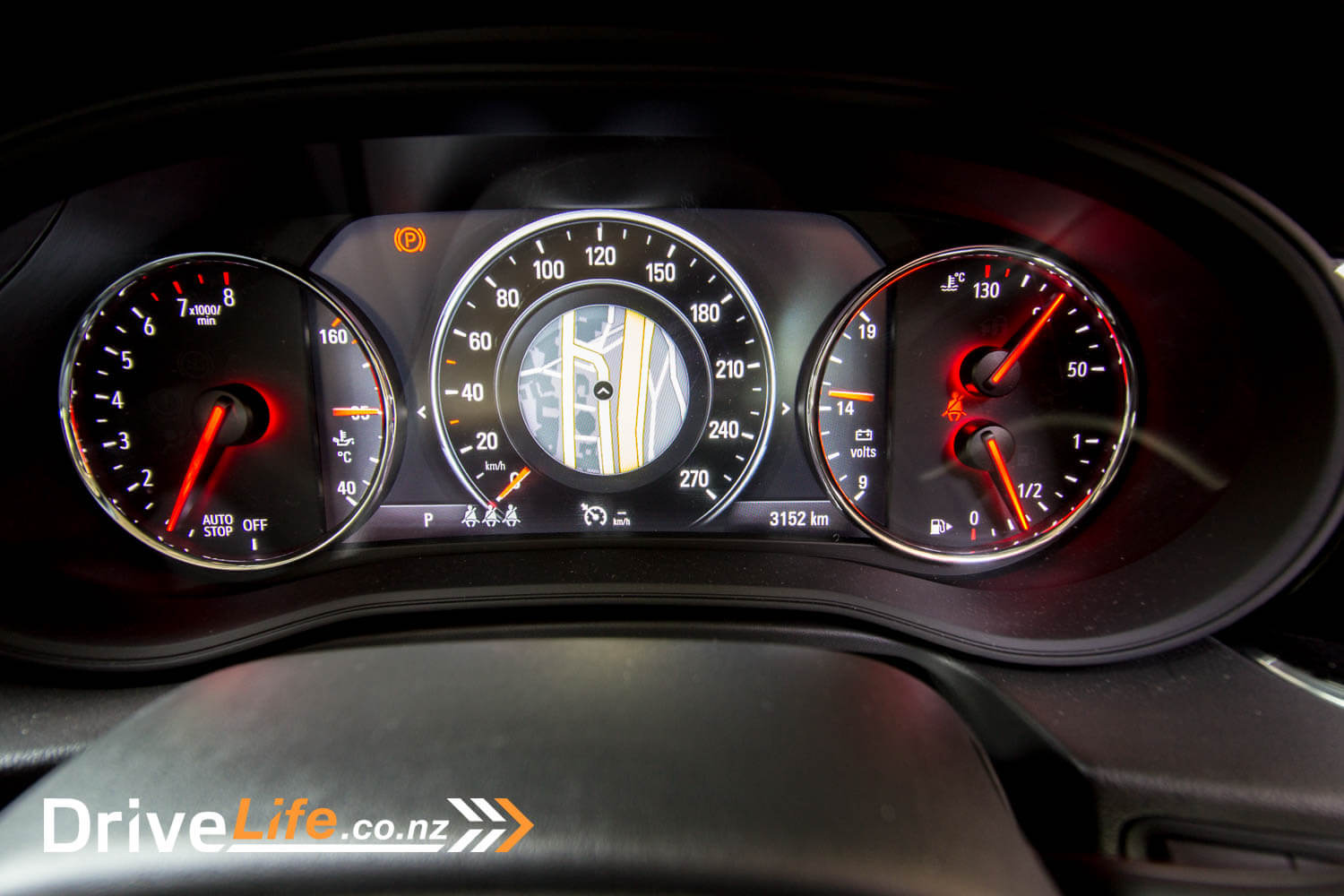
The GM MyLink infotainment system works well, and display clarity is good. You get Apple CarPlay and Android Auto as standard.
The steering wheel controls are standard GM fare and work well. I love the tactile feel of the speed or volume up/down thumbwheels. It was rare during my couple of weeks with the Commodore that I needed to look down to see what button I was pressing.
The glovebox sure isn’t on the generous side, but legroom is. Front and rear passengers shouldn’t have any issues with space; rear legroom is excellent for those of average height. Taller people may not find it as roomy as the older generation Commodore.
The seats themselves are pretty firm – not as bad as the rock-hard ones in an Astra, but firm all the same. Luckily, they are pretty comfy – even on the four-hour drive I did one day. The driver gets power seat adjustment, including 2-way electric lumbar adjust, and it was nice to see both front seats have manually adjusting cushion length.
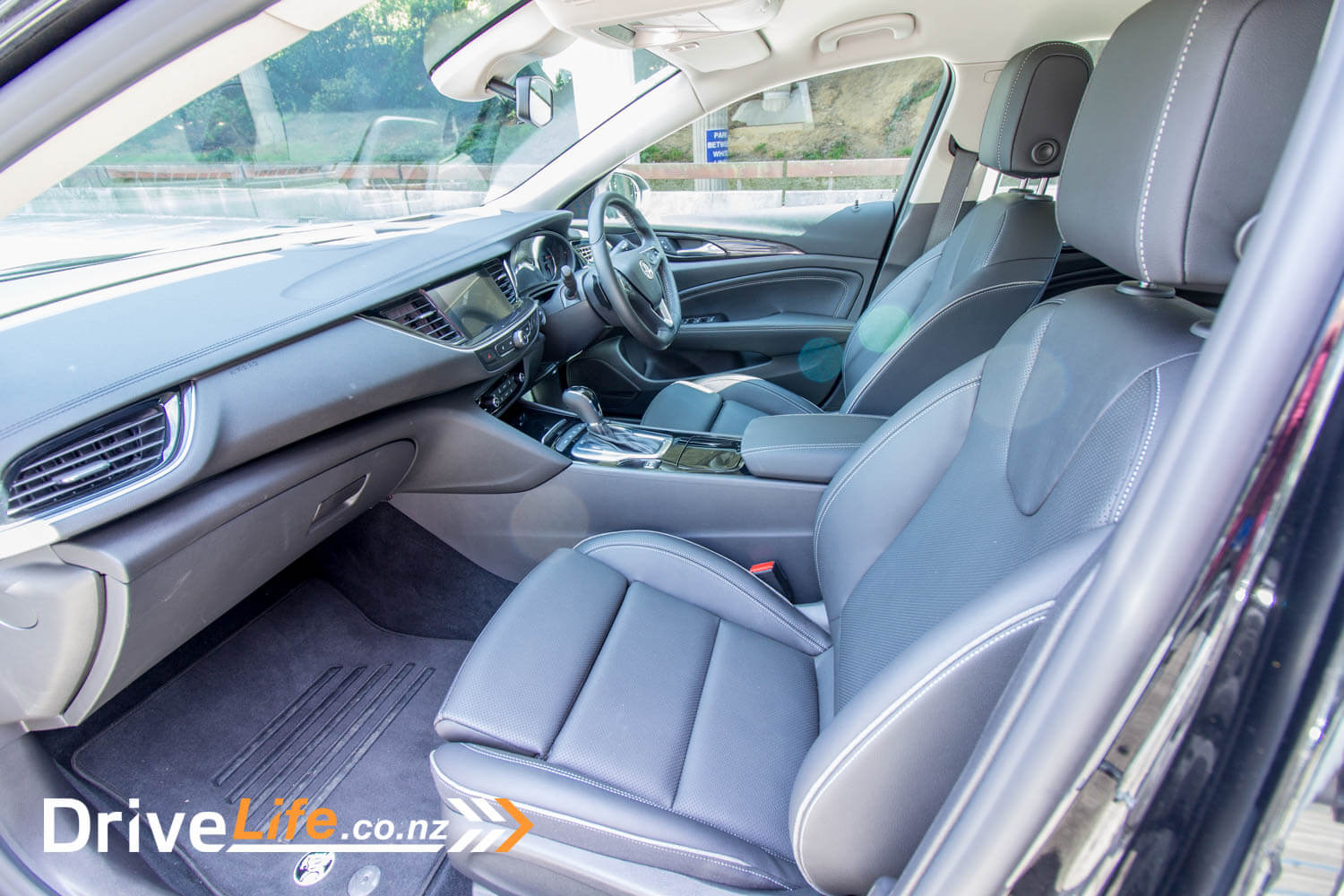
Strangely, at $60K the RS-V doesn’t have an auto-dimming rear-view mirror. Not a deal breaker I’m sure, but this is a common feature in most cars, especially those over say $40K.
At night, there’s some nice white LED strip lighting on the dash and front doors. Tastefully done, so don’t panic.
Opening the boot, one of the surprises here is that it isn’t electric – and it’s pretty heavy. I can see a few people struggling with this liftback’s weight. An electric tailgate isn’t even an option, which is a shame.
The boot itself is bordering on large – a bit shallow, but wide and long. It reminded me instantly of the Skoda Superb. There’s no spare tyre under the floor, just a bass speaker in its place, and a pump kit in case you get a flattie.
In fact, the whole Commodore reminds me of the Superb – a large, 5-door liftback with plenty of interior space to lounge about in.
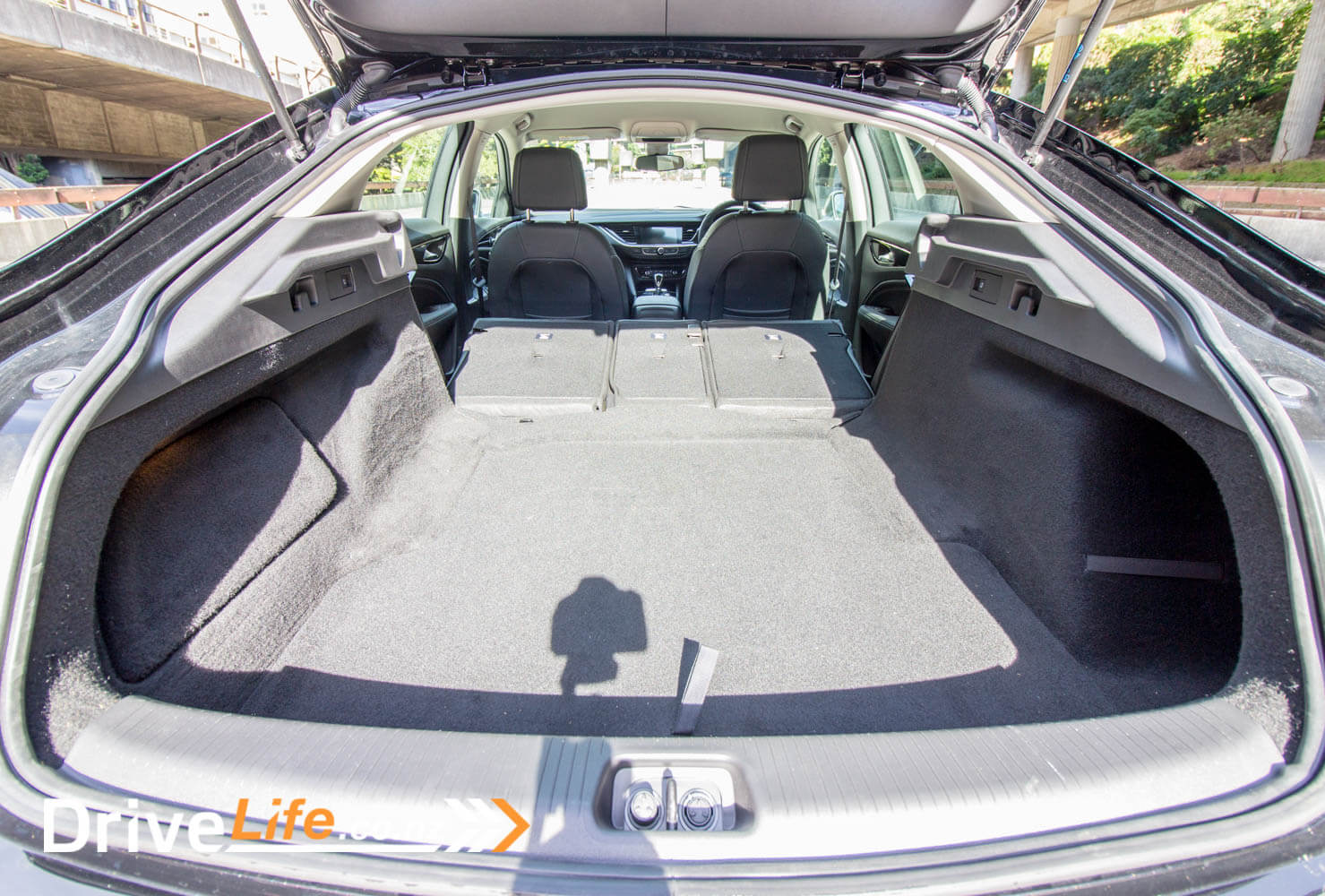
What Does The 2018 Holden Commodore RS-V Drive Like?
I was really hoping that Holden would send us the 4-cylinder turbo model to test, but we got sent the V6. Yes, I was a little disappointed. But then I went to pick up the V6 RS-V, and started it.
That was the beginning of a love affair with the sound of this engine. It’s no V8, it doesn’t sound as good as the C43 AMG V6, but man, it still sounds so good. Every time I started the RS-V, I grinned at this motor’s aural tones.
And it’s smooth, silky smooth. You’d expect that of a petrol V6, and the Commodore delivers on the promise.
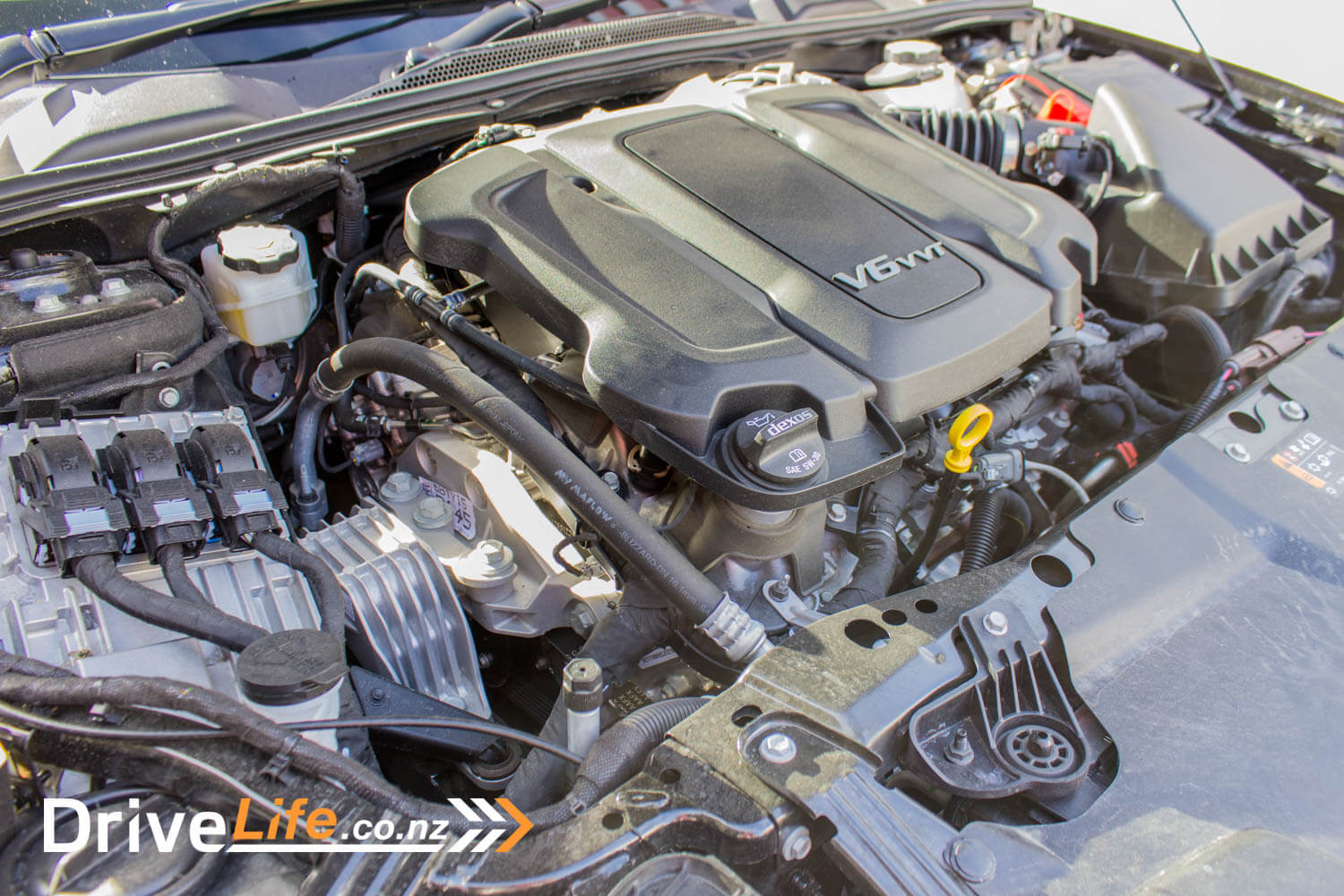
Not only is the engine smooth, so is that 9-speed automatic. Autos don’t get much better than this – it’s up there with BMW’s auto transmission in my opinion.
It still feels big car to drive, and I guess this is a good thing for potential older-model Commodore owners. It has that expansive bonnet thing going, and looking around the cabin, it’s a long way back to the back of the car.
Since we’ve got the RS-V, that means we also have AWD. Without having yet driven the FWD model it’s hard to compare. As you’d expect, grip is excellent, and it really showed its worth on a trip to Masterton. I managed to chuck the car at a number of corners, and it stuck – and went.
That V6 loves to rev, and even turn in isn’t too bad, almost impressive for the size of the car.
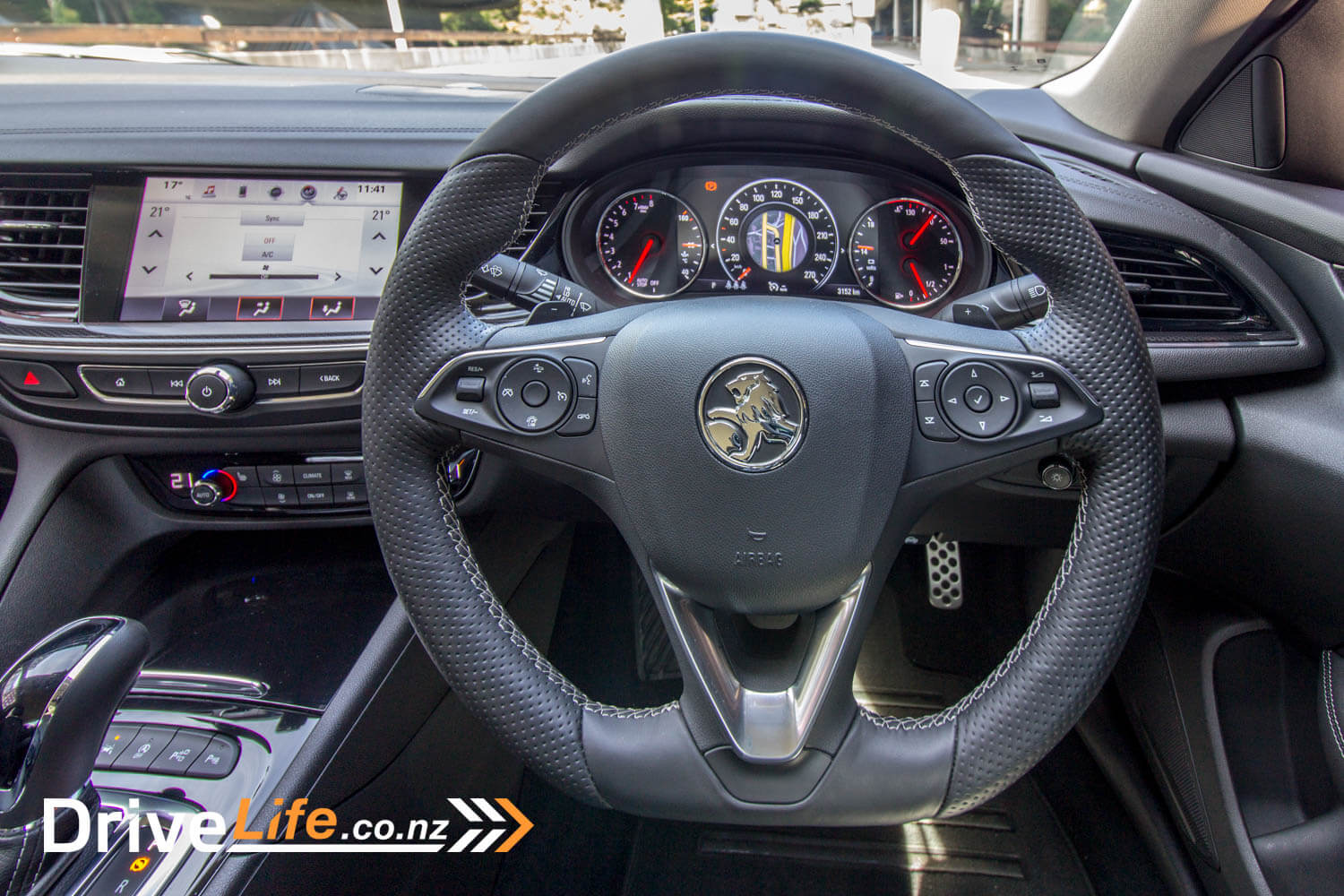
If you get the car close to the limit of grip, understeer starts to kick in, but if you push it a bit more, you end up with a nice, controllable 4-wheel drift. It’s a whole lot of fun, but you are always aware of the size of this car. After all, it does weigh in at 150Kg more than the 4-cylinder FWD model.
There’s two drive modes to pick from when driving; Normal and Sport mode. Honestly, I couldn’t tell any difference on that windy road between Sport and Normal. Neither steering feel or suspension felt any different. Still it didn’t matter, the Commodore can whip around the bends if you want it to.
I did find on the GM MyLink system that that Sport mode was customisable. Good news and bad news here; Good news is that there is an option to customise Sports mode. The bad news is that there’s just two adjustments, Sports Steering on/off and Sports AWD on/off. That’s it. And turning either off didn’t seems to make any difference, so I let them be.
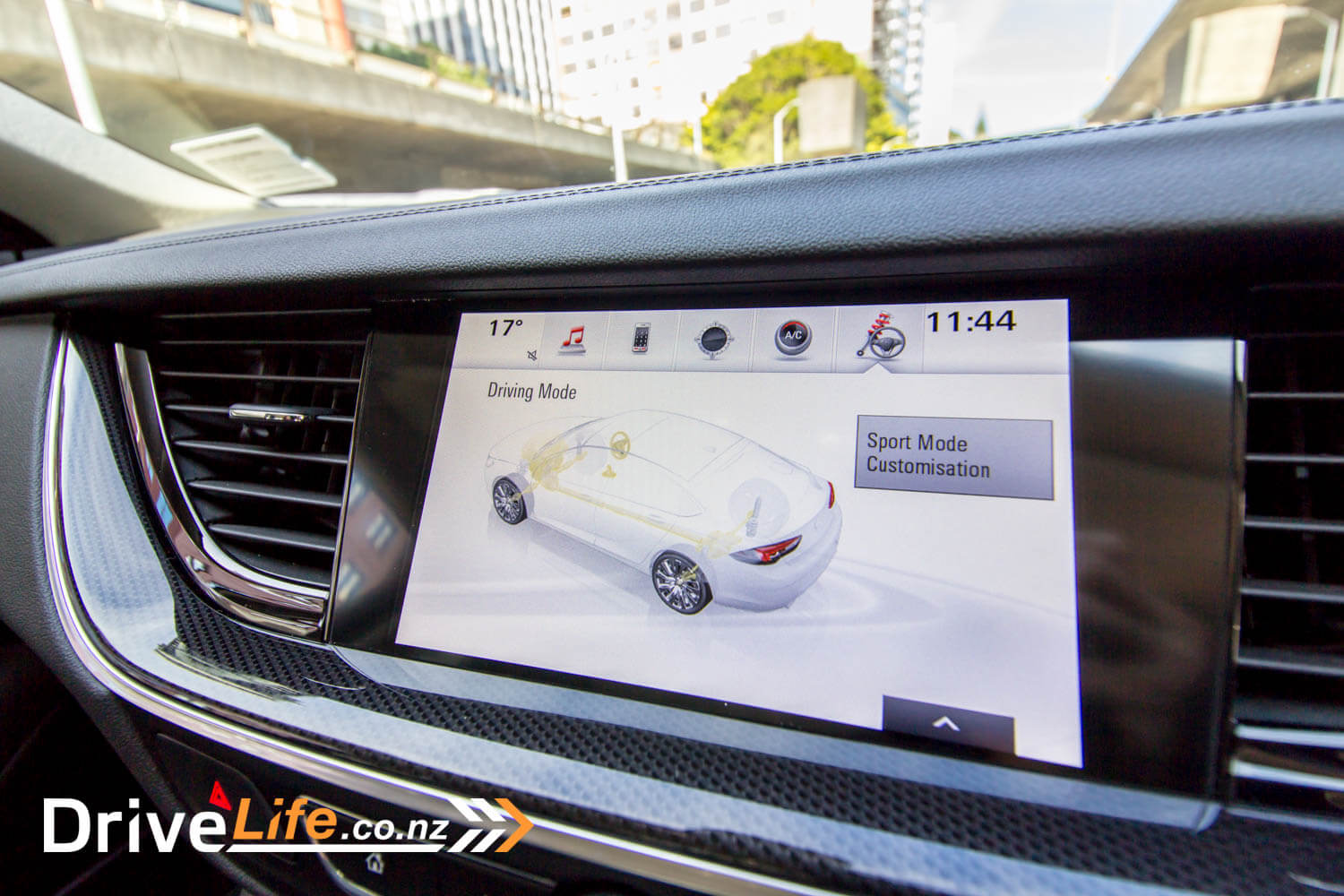
Still on Sports mode – when you turn it on, the light in the Sports mode button lights up, and that’s it. Nothing in front of the driver changes – no gauges changing to red, not even an S symbol on the dash or in the HUD to let you know.
With above average handling, you would think the ride would be pretty firm, and you’d be right. Over smaller bumps it can get quite jittery, while speed bumps and longer road irregularities are soaked up nicely, but my passengers often remarked on the jiggly ride.
On the daily drive, visibility is very good, although the C pillars are quite chunky. Blind spot monitoring helps here.
Helping hugely on the daily drive is the heads-up display. It is almost spot on for functionality, compared to some. The controls to adjust the brightness, info or angle are just to the right of the steering wheel – perfect. The info it delivers is good; turn-by-turn instructions, a rev counter, your music selection and tracks and of course, your speed.
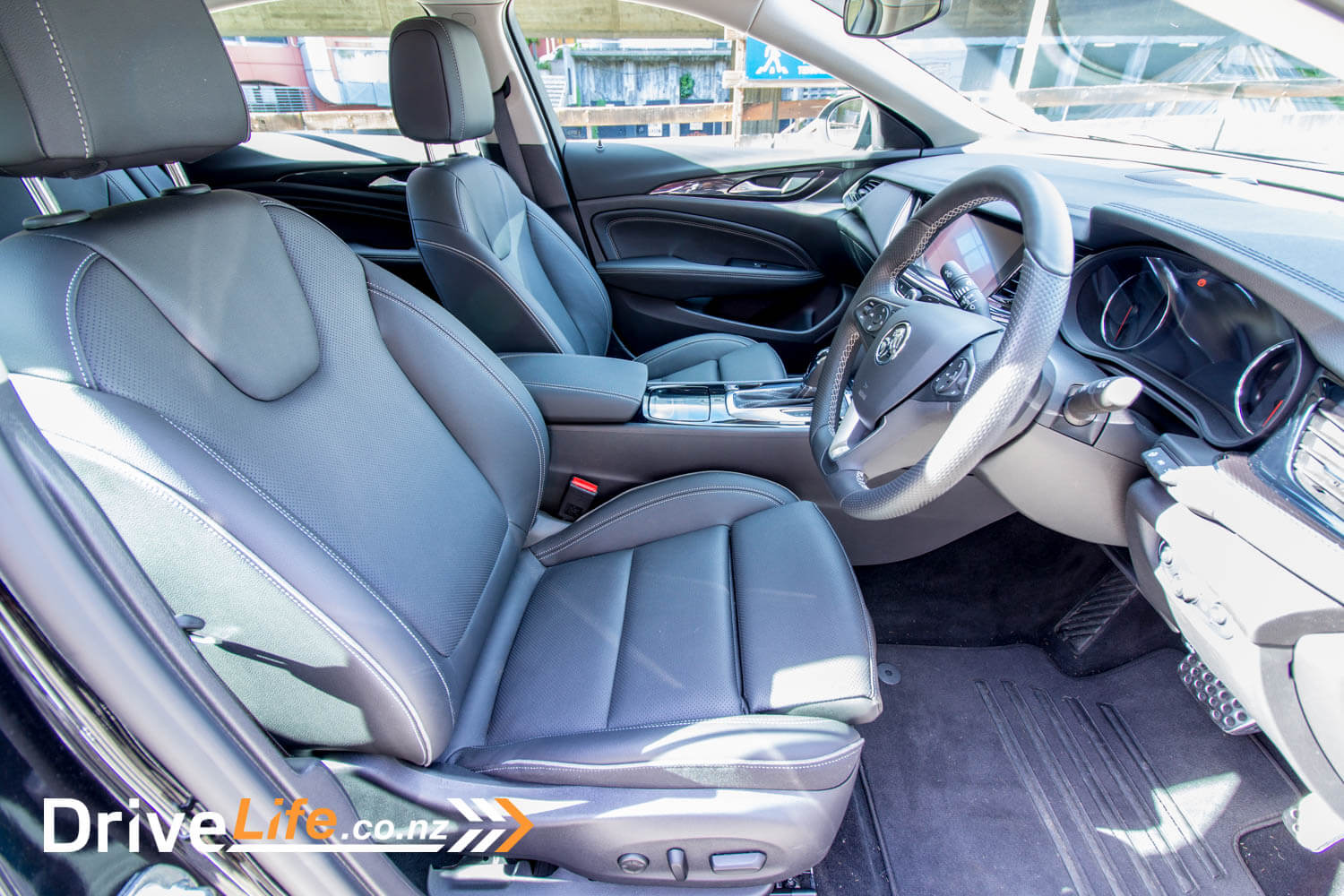
The HUD also gives you a distance-to-the-car-in-front monitor, in the shape of a green car if you are at a safe distance and then an orange car if you are too close. Look, I love this idea – great for learner drivers and lots of seasoned drivers could learn from this. But…I hate that there’s a but, but Holden have missed the mark here a bit. The car icon stays green right until you are 0.6 seconds away from the car in front, then turns orange. This is way too close. We all know from the Road Code you should be 2 seconds away in the dry, and 4 seconds in the wet. This is a bit dangerous to allow drivers to think they are following at a safe distance, when they aren’t.
One other missed opportunity for the HUD is to show the current speed limit, and this also isn’t shown on the main SatNav screen. Such a shame.
On the plus side, if you switch the trans into Manual mode and have the HUD on the rev counter and speed setting, you can see which gear you are in, which is something some manufacturers miss doing with a HUD.
Another plus for the HUD is Pedestrian Recognition, showing a walking man icon if pedestrians are about. Handy stuff if the driver isn’t paying attention.
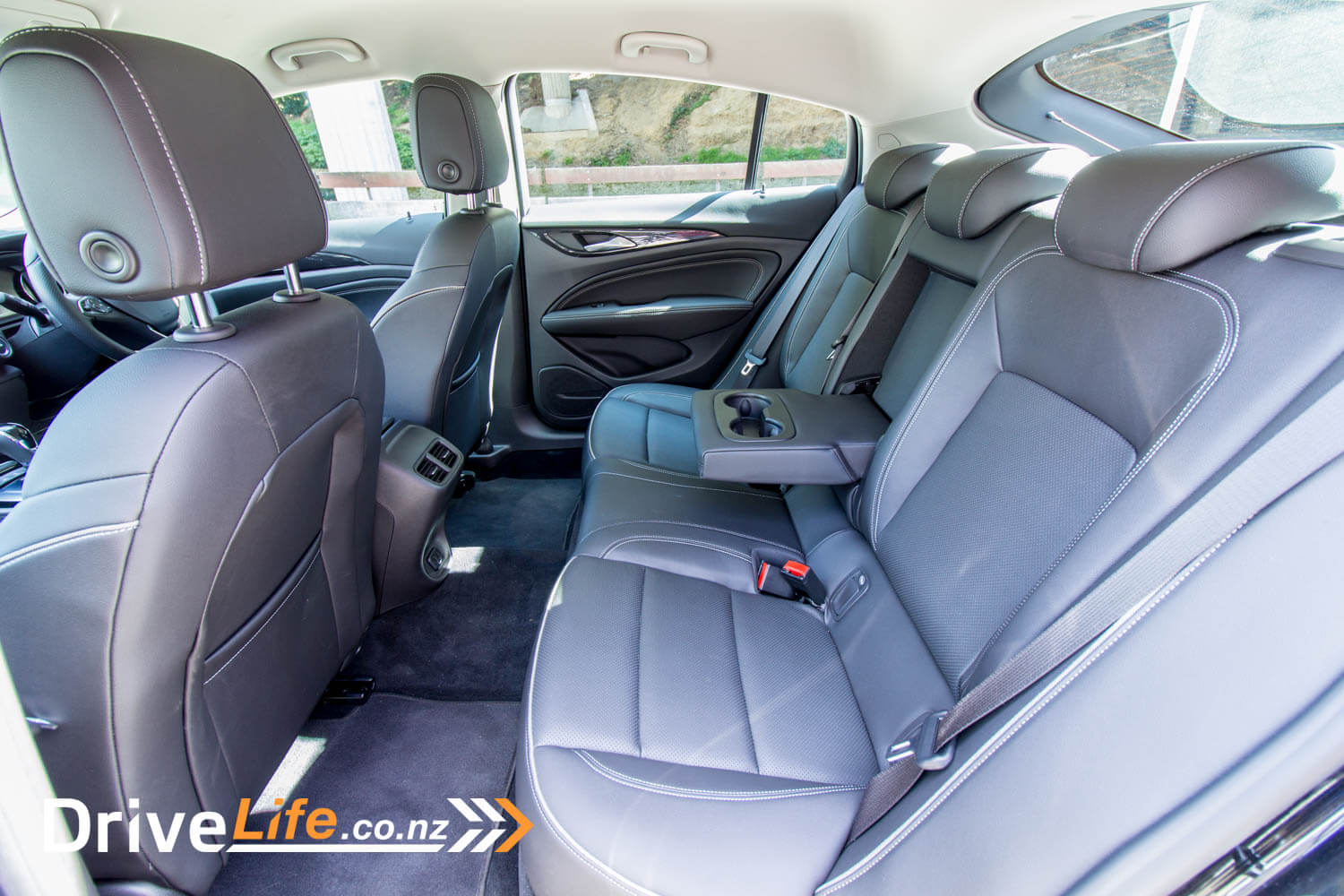
I did notice when doing the specs sheet for this car that the turning circle is over 11 metres. I remember thinking, that’s pretty wide – and it feels it. Where most cars would do a U-turn, it’s a three-point turn in the Commodore.
On quite a few previous reviews, I’ve gone on a bit about engine auto-stop systems; very few manufacturers do this right. If I’m at the lights and the engine turns off, great. But if I put the park brake on since I’m stopping for a while, the engine should stay off – in most cars it doesn’t, which is pointless. But in most cars that don’t do it right, you can shift the car into Neutral first, and then the park brake, and the engine will stay off. The Commodore goes one worse here;
Put the park brake on at the lights, the engine starts. And worse still, as soon as you move the car into Neutral, the engine starts instantly. I can’t imagine how they could get this wrong, and who did the usability testing on the car. Why would you want the car to start when you move it into Neutral? You’re obviously going to be a while. I’ve said it before and it’s worth mentioning again – this isn’t rocket science.To all car manufacturers: If you’re going to use an engine auto-stop feature, keep the engine off until I touch the gas pedal; it’s that simple.
At least the car does come with an electric park brake, but surprisingly no auto-hold feature.
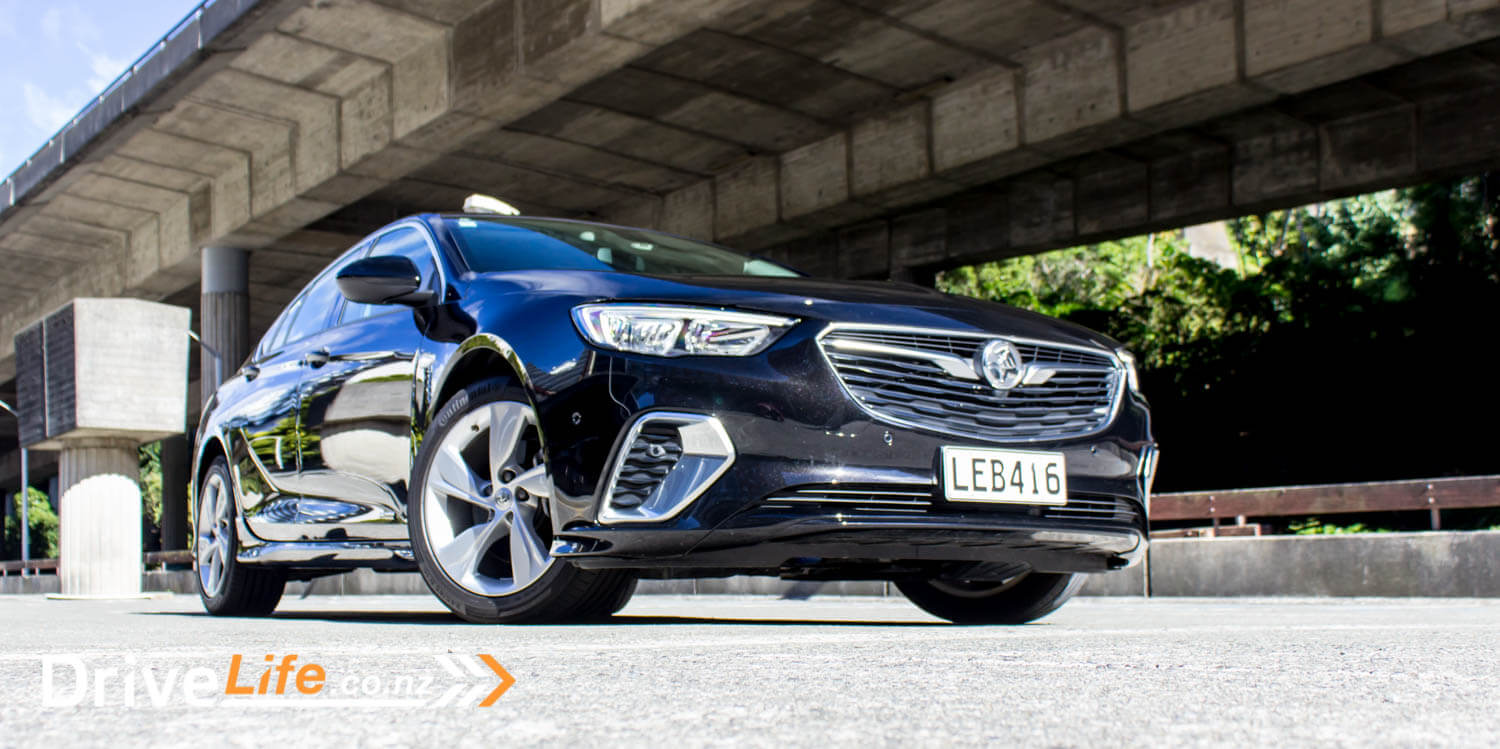
One more negative for this $60,000 Commodore – no adaptive cruise control. At this sort of money, that’s almost inexcusable. Sure, you can go to the VXR to get this, but you shouldn’t have to. I was surprised as I thought that even the base version would have adaptive cruise.
Interestingly, even the top-spec Holden Equinox we tested didn’t have adaptive cruise either. I’m not sure what it is with Holden and the reluctance to fit this to more models.
Those are things that help and don’t help with the daily drive. But to help you commute, there is that delicious V6 which gives you plenty of point-and-go potential when filtering through the traffic. There’s also very little wind noise, even on the motorway, and road and tyre noise are extremely muted. A great job has been done here to reduce noise levels.
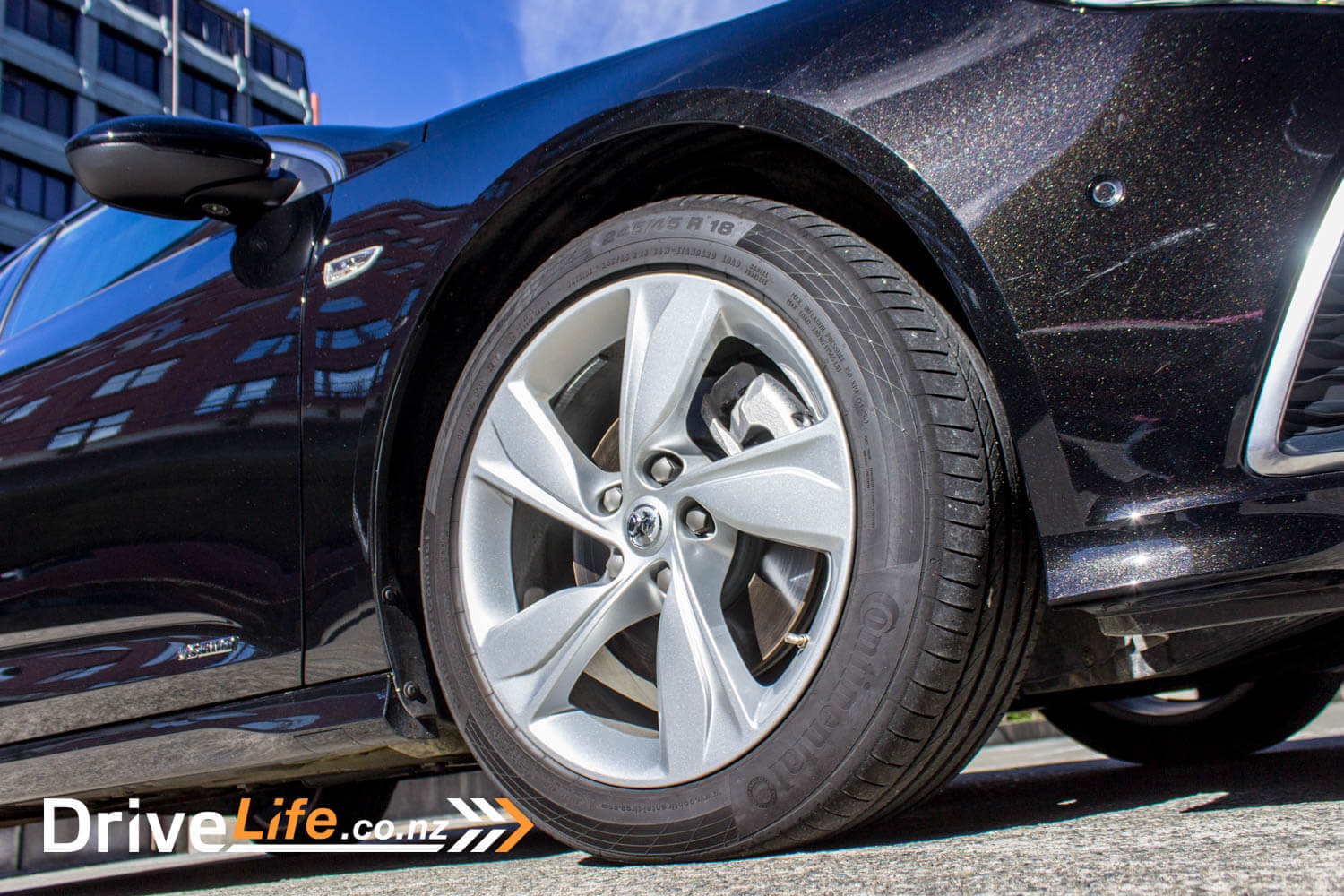
Internal noises via the audio system are good. I wouldn’t say great, although midrange and treble is very nice, I was disappointed by the lack of bass – especially with that fat ass bass speaker in the spare wheel well.
Holden says the 3.6 V6 RS-V should use around 8.9 litres of fuel for every 100 kilometres driven; over two weeks and 700km of fairly mixed driving, I got 10.4. So a bit out, but certainly not the biggest gap we’ve ever seen. The reality is this is a large and fairly heavy V6 petrol car – 10.4 sounds about right.
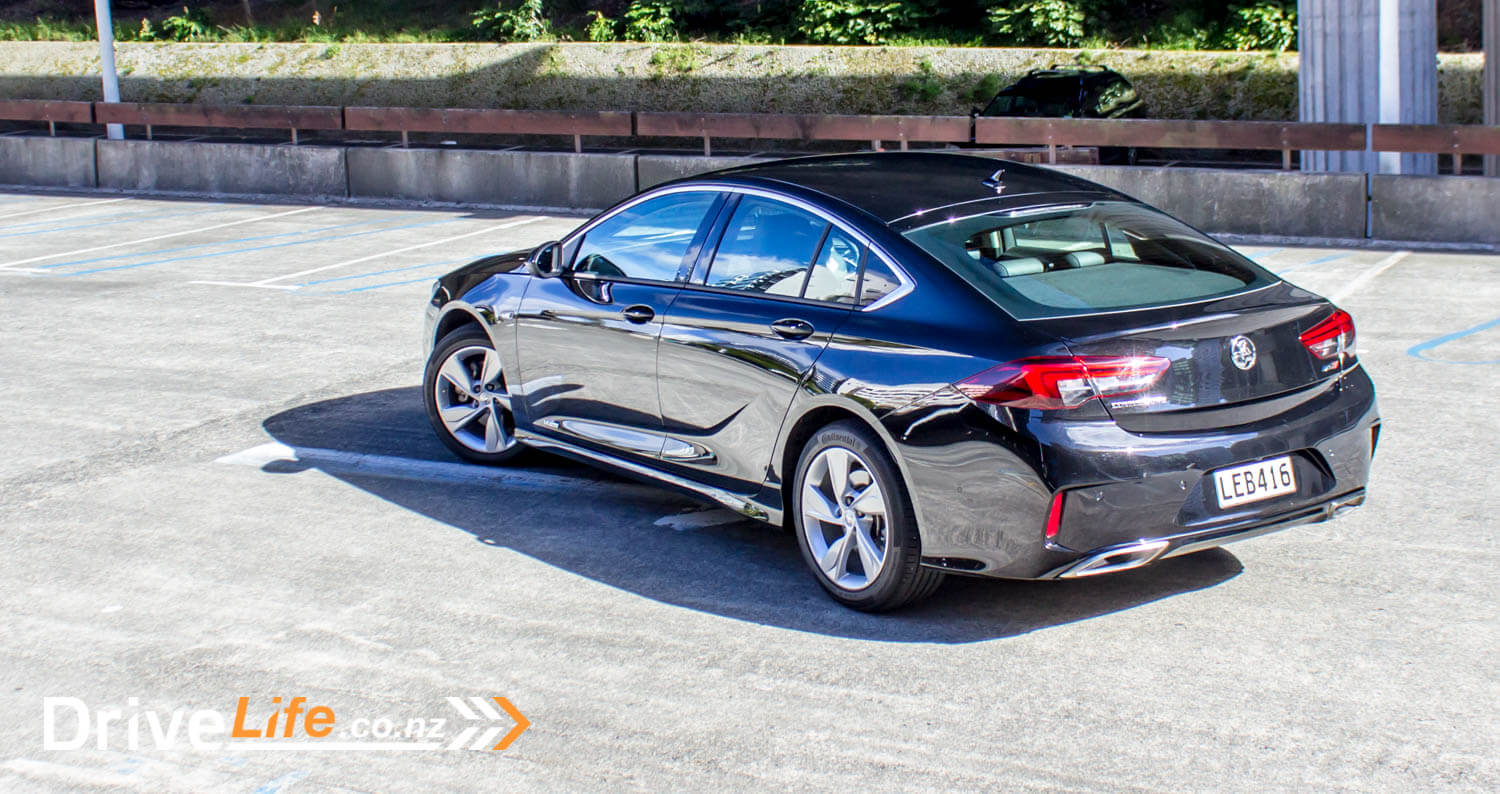
What’s The Competition For The 2018 Holden Commodore RS-V?
| Brand/Model | Engine | Power/Torque | Fuel, L/100km | Seats | Boot space, litres (3rd row down where fitted) | Towing capacity Kg (unbraked/braked) |
Price |
| Skoda Superb TSI Style+ (AWD) | 2.0-litre, 4-cylinder turbo petrol | 206kW/350Nm | 7.2 | 5 | 625 | 750/2200 | $65,490 |
| Honda Accord V6 NT (FWD) | 3.5-litre V6 petrol | 206kW/339Nm | 9.3 | 5 | 457 | Na/1600 | $63,000 |
| Holden Commodore RS-V liftback (AWD) | 3.6-litre V6 petrol | 235kW/381Nm | 8.9 | 5 | 490 | 750/2100 | $58,990 |
| Mazda6 Limited Sedan (FWD) | 2.5-litre, 4-cylinder petrol | 138kW/250Nm | 6.6 | 5 | 474 | 550/1500 | $55,995 |
| Hyundai Sonata Elite Limited (FWD) | 2.0-litre, 4-cylinder turbo petrol | 180kW/350Nm | 9.2 | 5 | 510 | 650/1300 | $55,990 |
| Subaru Legacy RS (AWD) | 3.6-litre V6 petrol | 191kW/350Nm | 9.9 | 5 | 493 | 750/1800 | $54,990 |
| Kia Optima Turbo GT (FWD) | 2.0-litre, 4-cylinder turbo petrol | 180kW/350Nm | 8.5 | 5 | 510 | 700/1400 | $53,990 |
| Toyota Camry V6 Sedan (FWD) | 3.5-litre V6 petrol | 224kW/362Nm | 8.9 | 5 | 524 | 500/1600 | $47,990 |
| Ford Mondeo Trend Hatchback (FDW) | 2.0-litre, 4-cylinder turbo petrol | 177kW/345Nm | 8.2 | 5 | 557 | 750/1200 | $42,290 |
What’s The Pros and Cons For The 2018 Holden Commodore RS-V?
| Pros | Cons |
|
|
What Do We Think Of The 2018 Holden Commodore RS-V?
The ZB Commodore was better than I thought it would be. As I said, I was really hoping for the four-cylinder model to test, but the V6 did not let me down.
It’s been said that the four-cylinder turbo model is a better car overall than the V6; that model then is going to make waves in this segment of the market.
Is the new Commodore ground-breaking? Not really, but it’s still a great drive.
The V6 can hold its head high – it does everything you expect it would, and does it well. Well done, Holden.

2018 Holden Commodore RS-V
Chevrons 4.0
| Vehicle Type | Large-sized, 5-door liftback |
| Starting Price | $45,990 |
| Price as Tested | $58,990 |
| Engine | 3.6-litre, V6 petrol |
| Power, Torque | 235kW/381Nm |
| Transmission | 9-speed automatic |
| 0-100km/h, seconds | n/a |
| Spare Wheel | Tyre inflator kit only |
| Kerb Weight, Kg | 1676 |
| Length x Width x Height, mm | 4897x1863x1455 |
| Cargo Capacity, litres | 490/1450 |
| Fuel capacity, litres | 61 |
| Fuel Efficiency | Advertised Spec – combined – 8.9 L/100km Real World Test – combined – 10.4 L/100km Low Usage: 0-6 / Medium Usage 6-12 / High Usage 12+ |
| Towing Capacity Kg, unbraked/braked |
750/2100 |
| Turning circle, metres | 11.14 Small: 6-10m / Medium 10-12m / Large 12m+ |
| Warranty | 3 year/100,000km 3 years free servicing Roadside Assistance |
| ANCAP Safety Ratings | 5 Star |
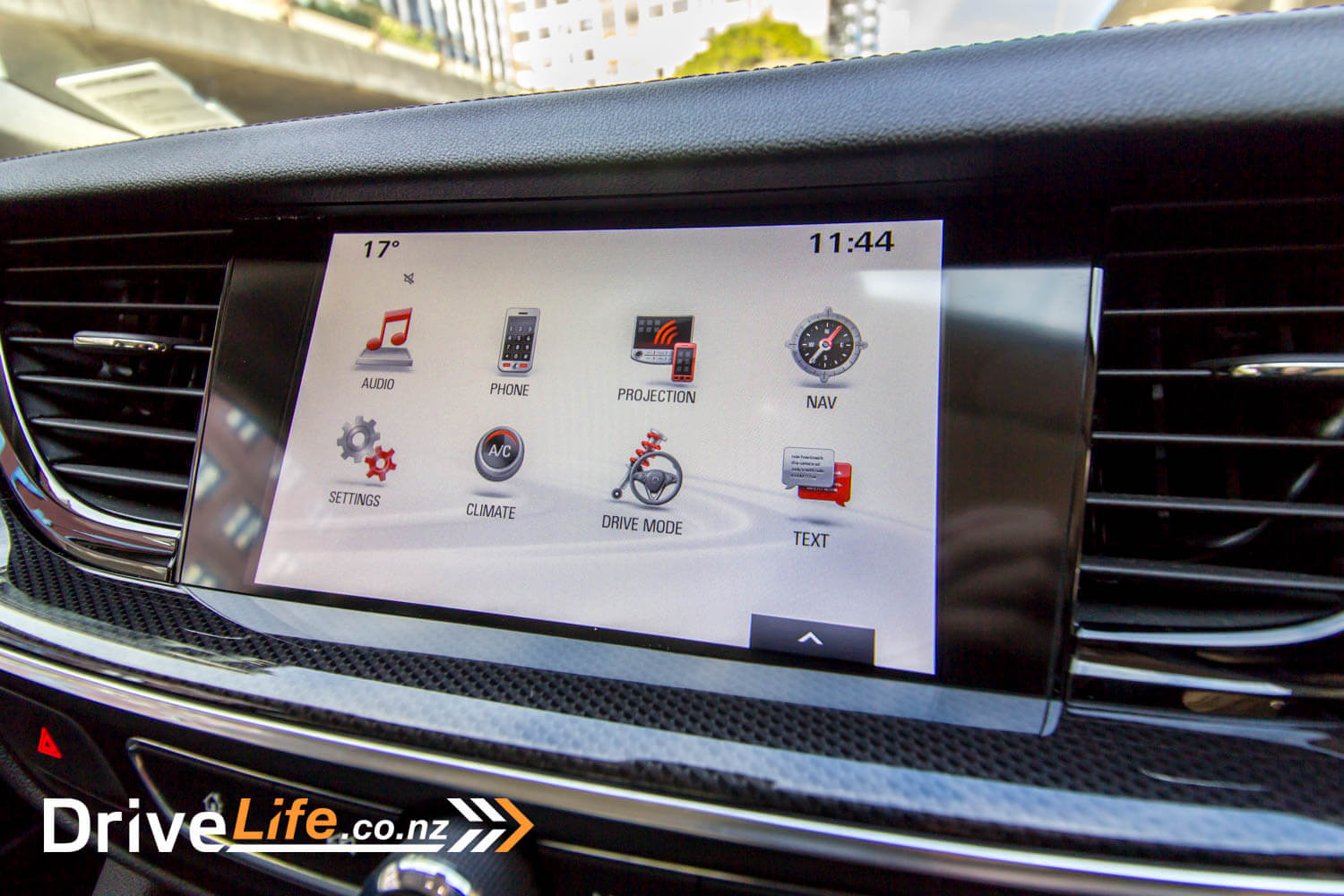
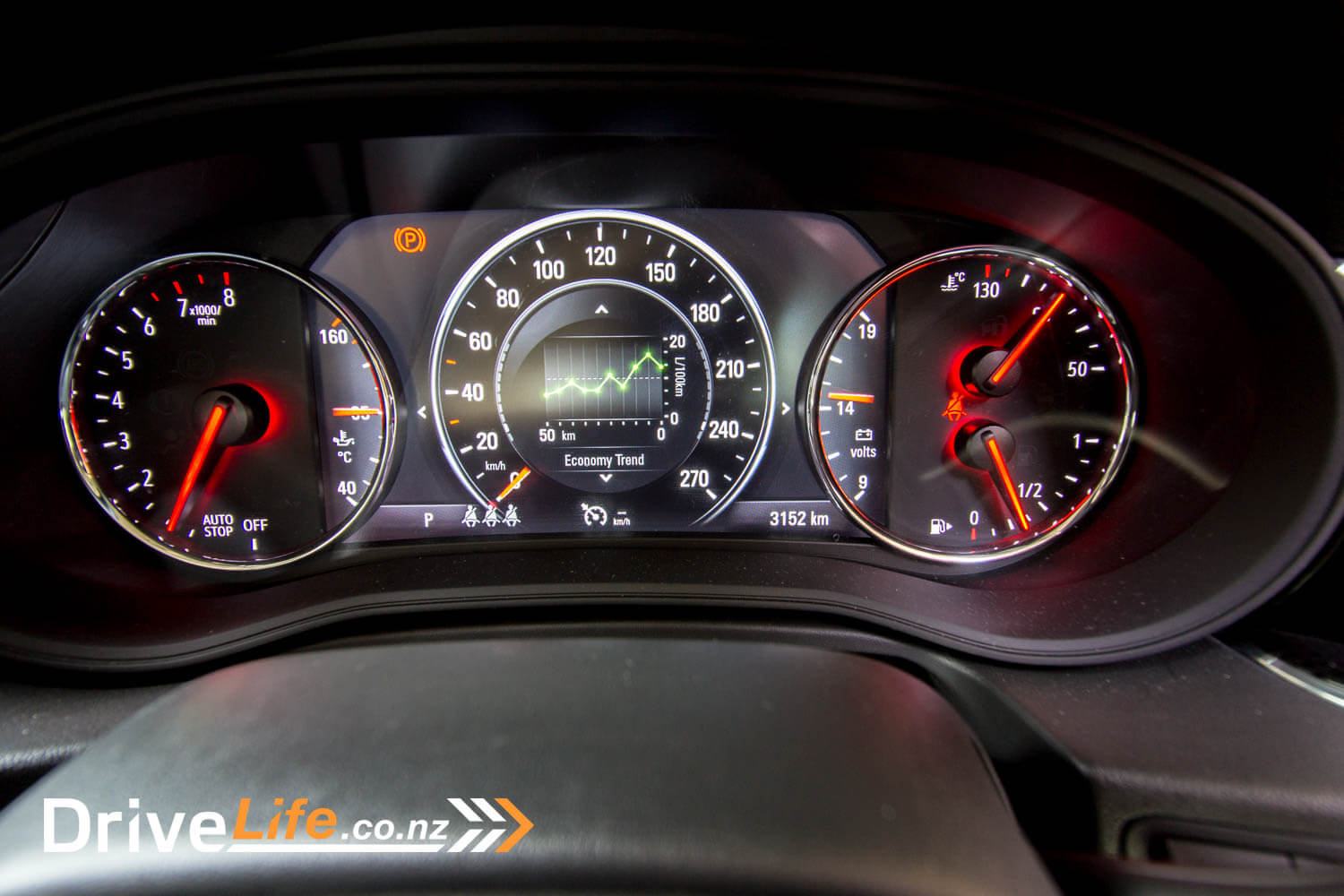
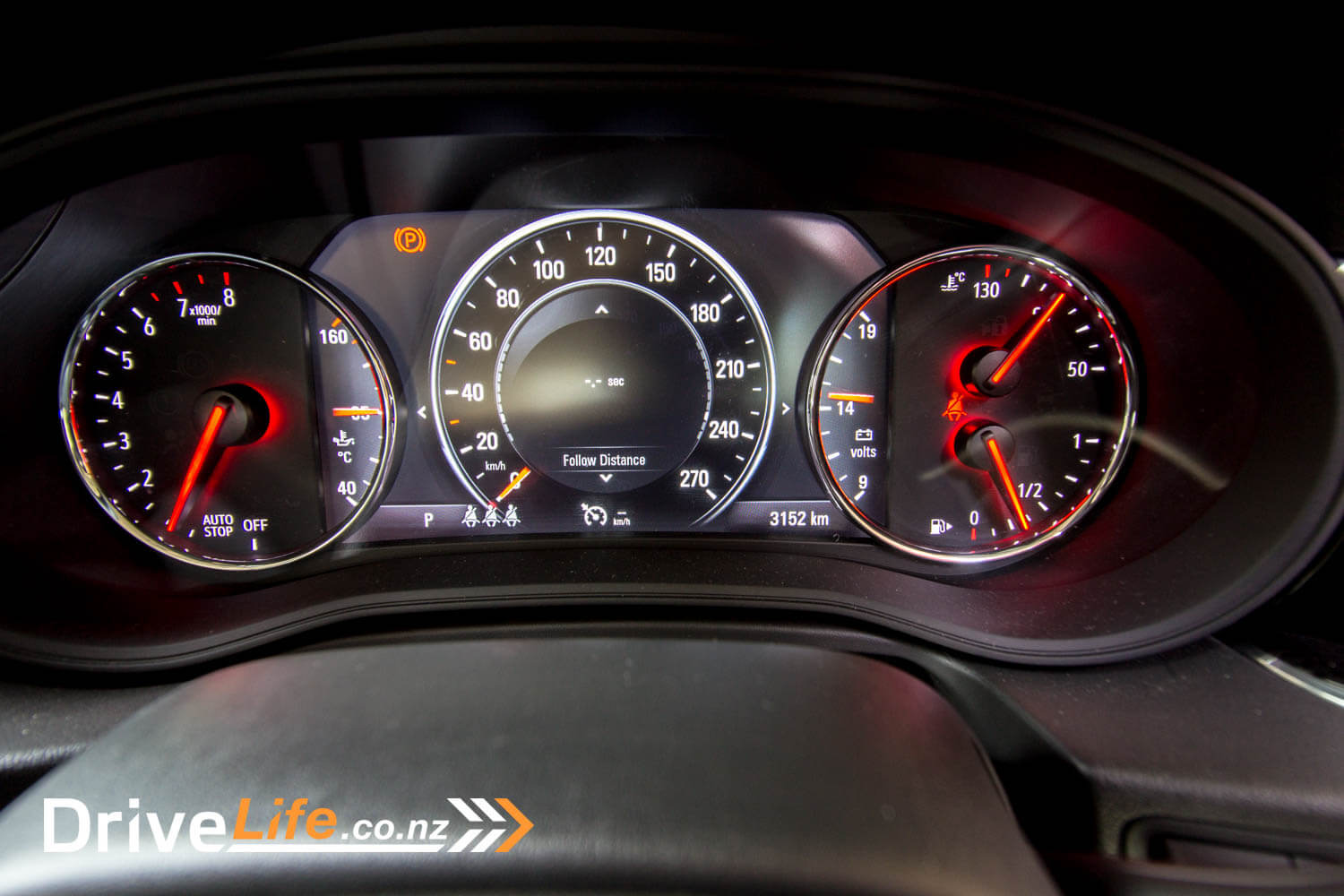
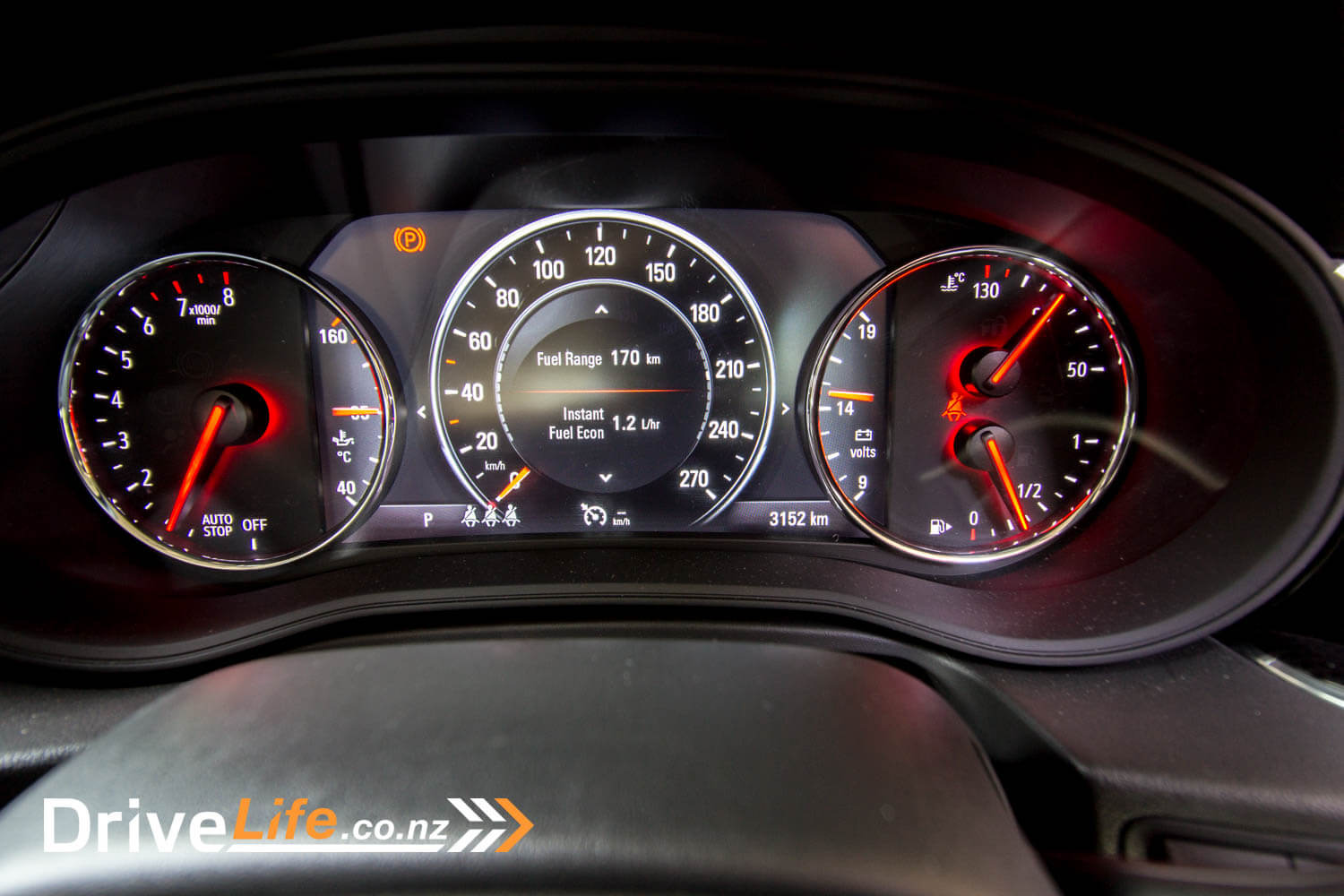
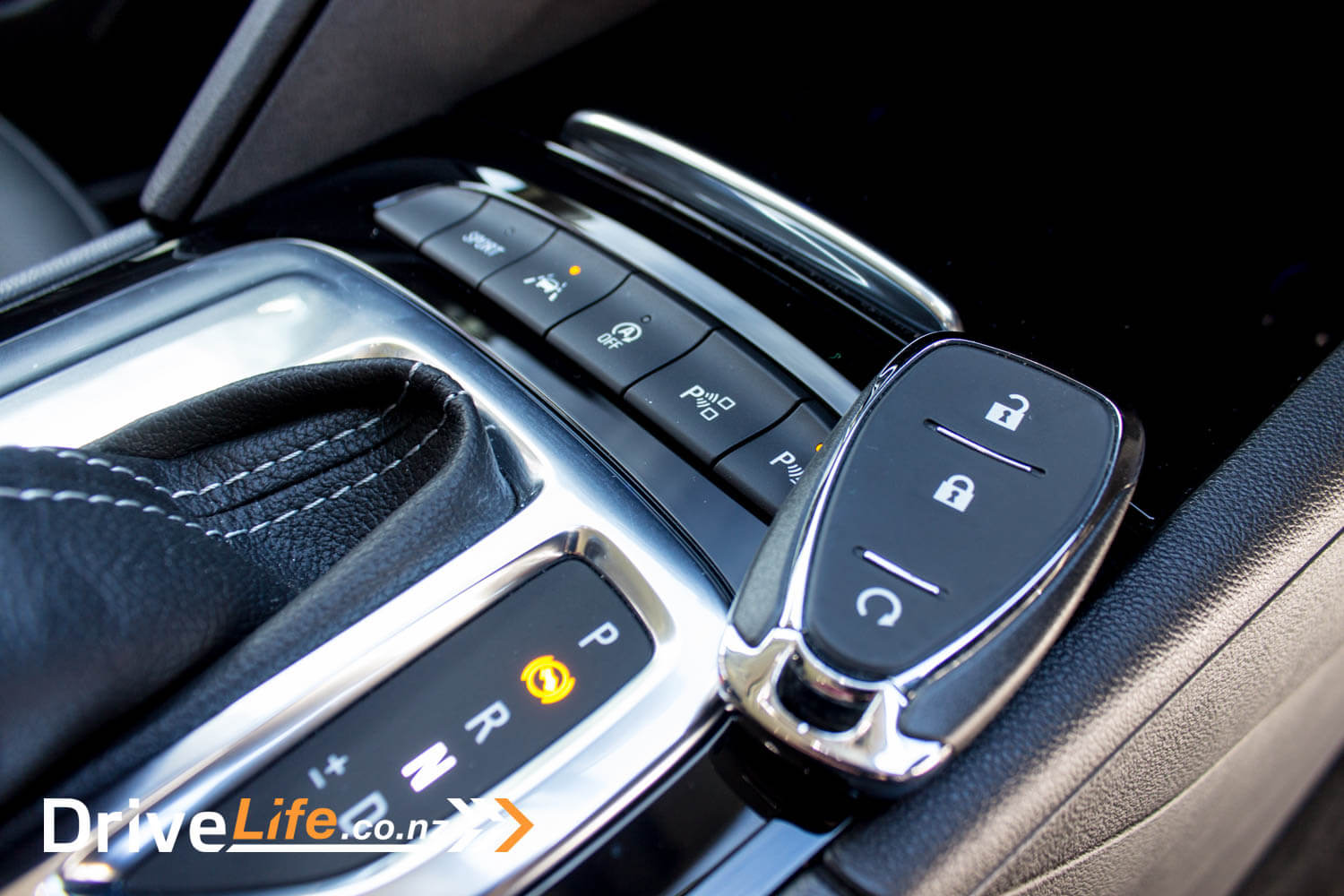
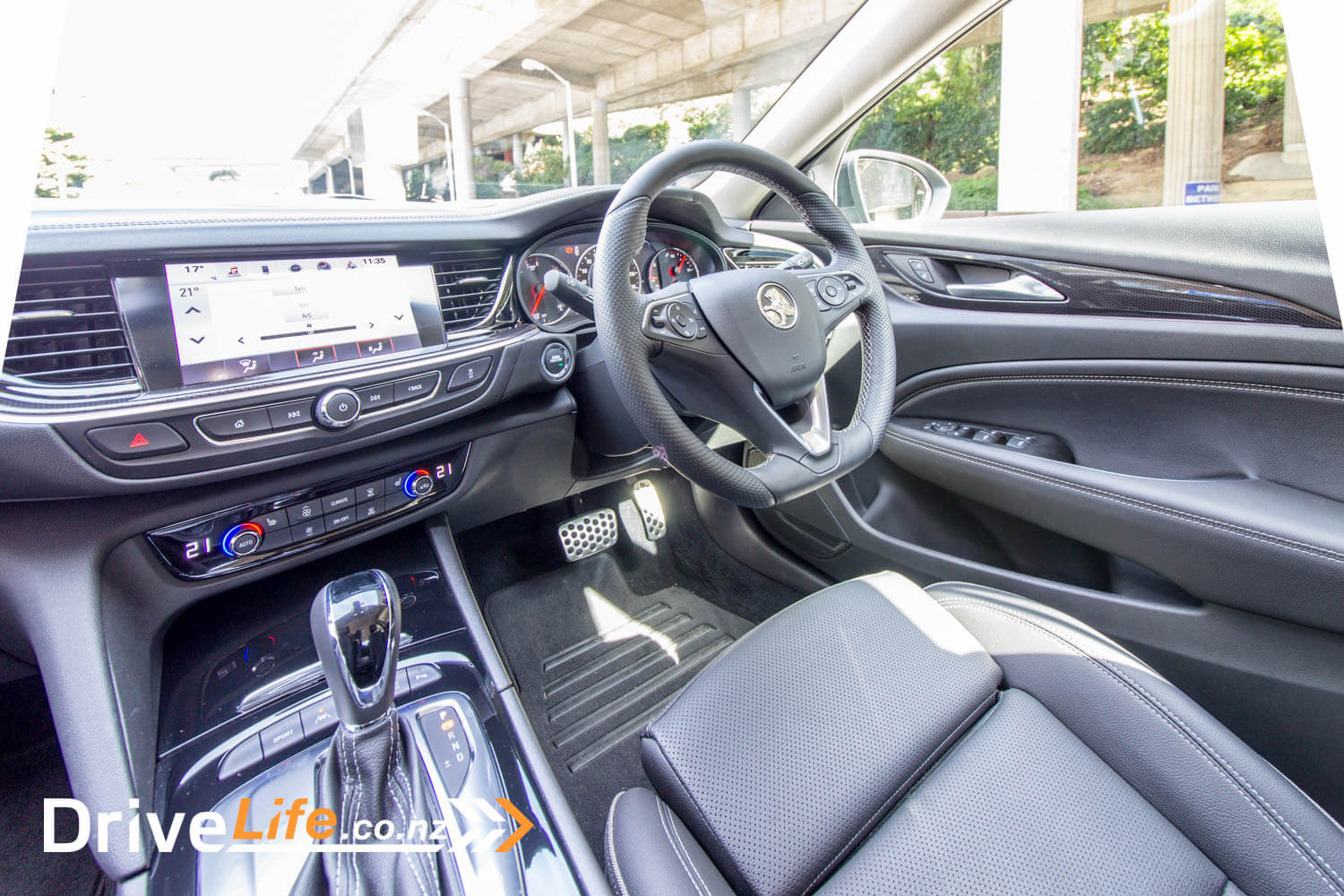
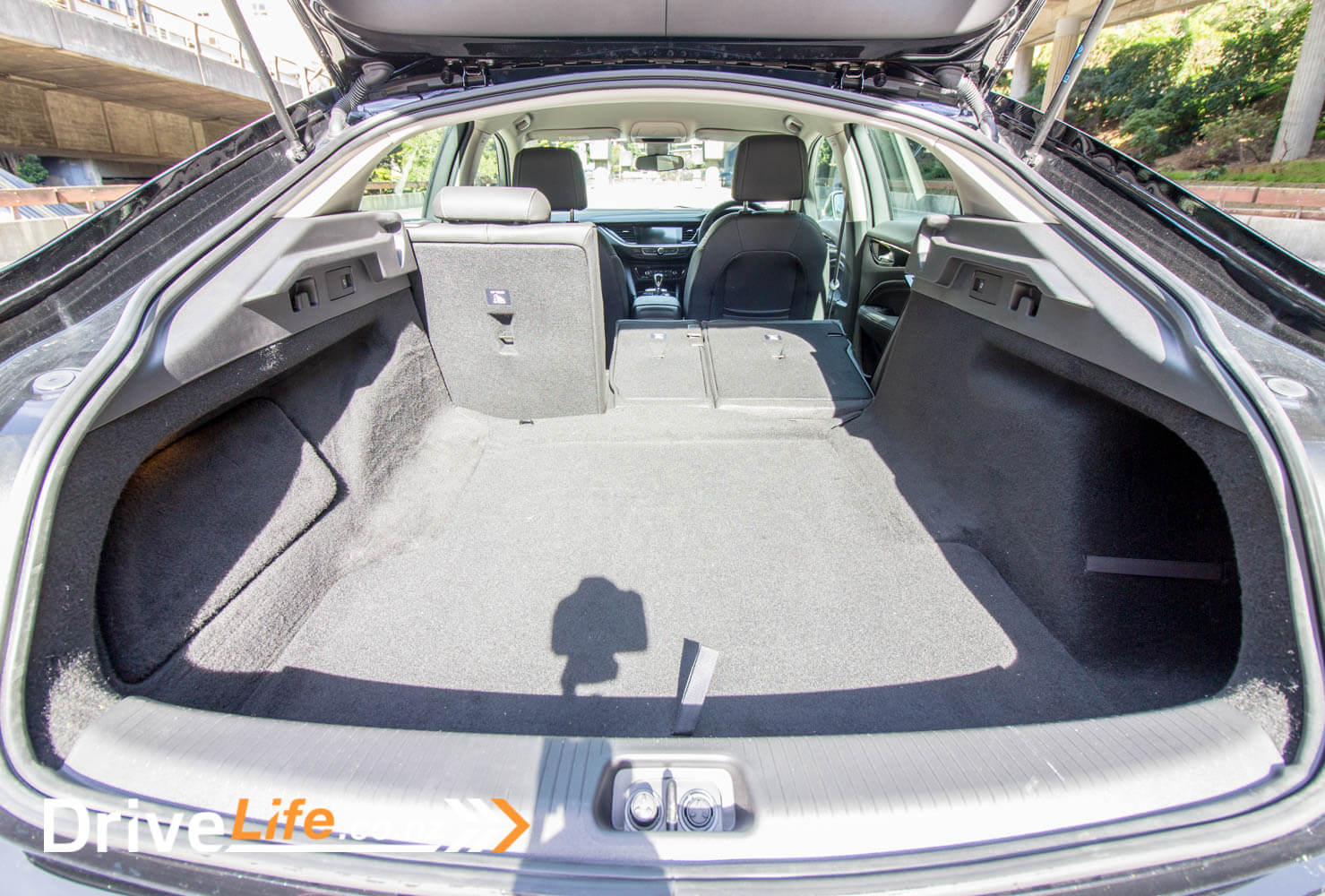
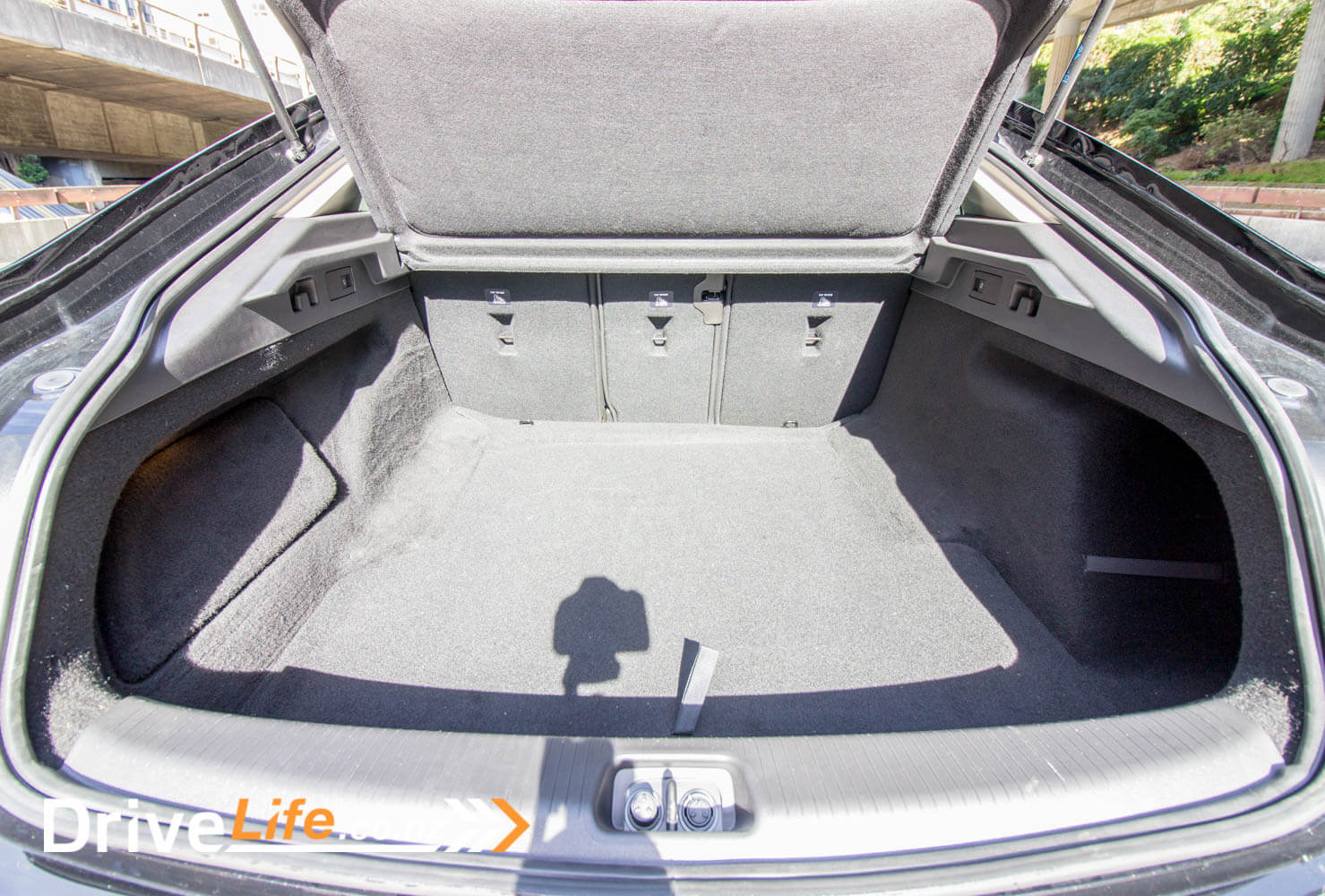

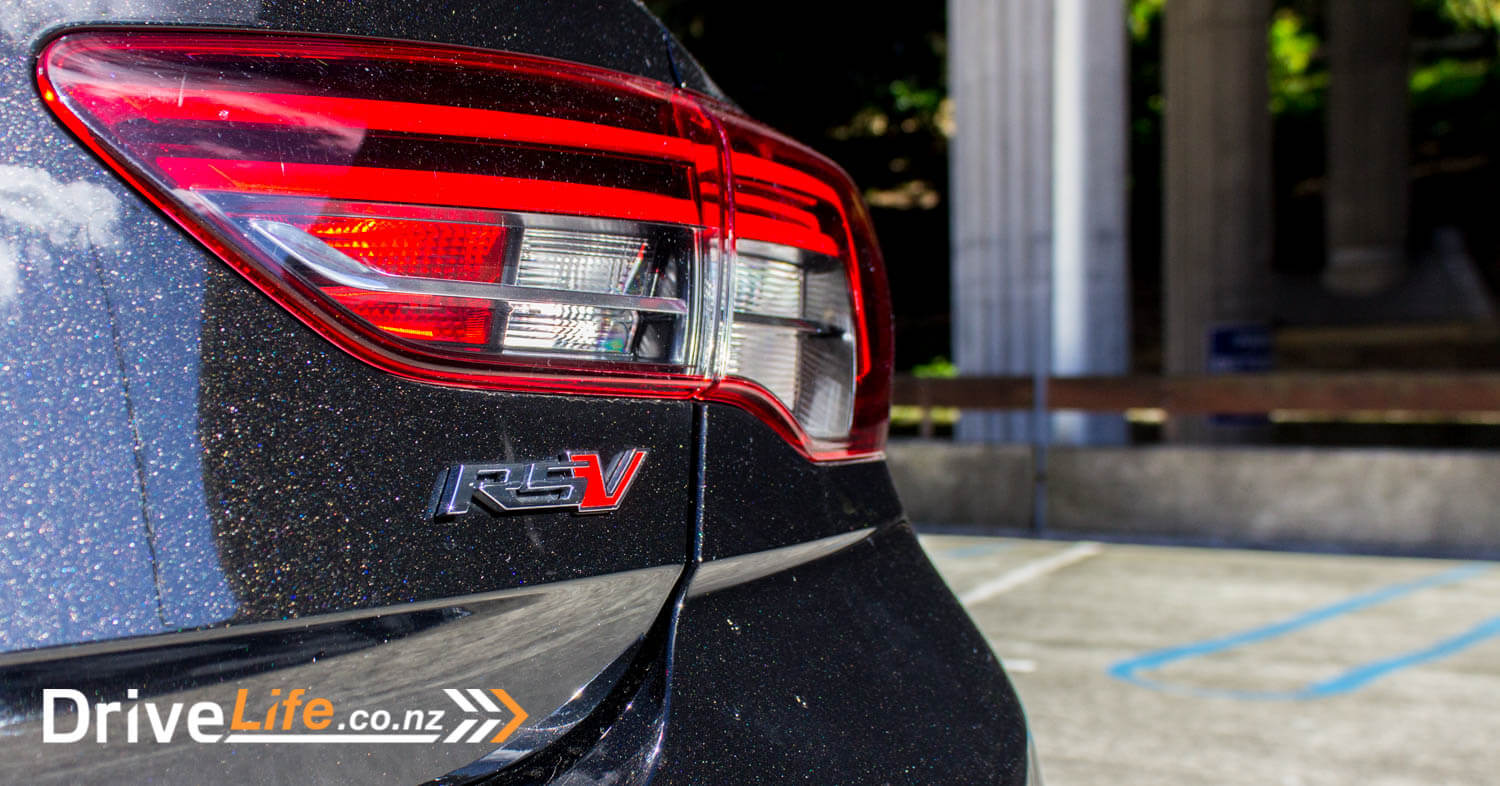
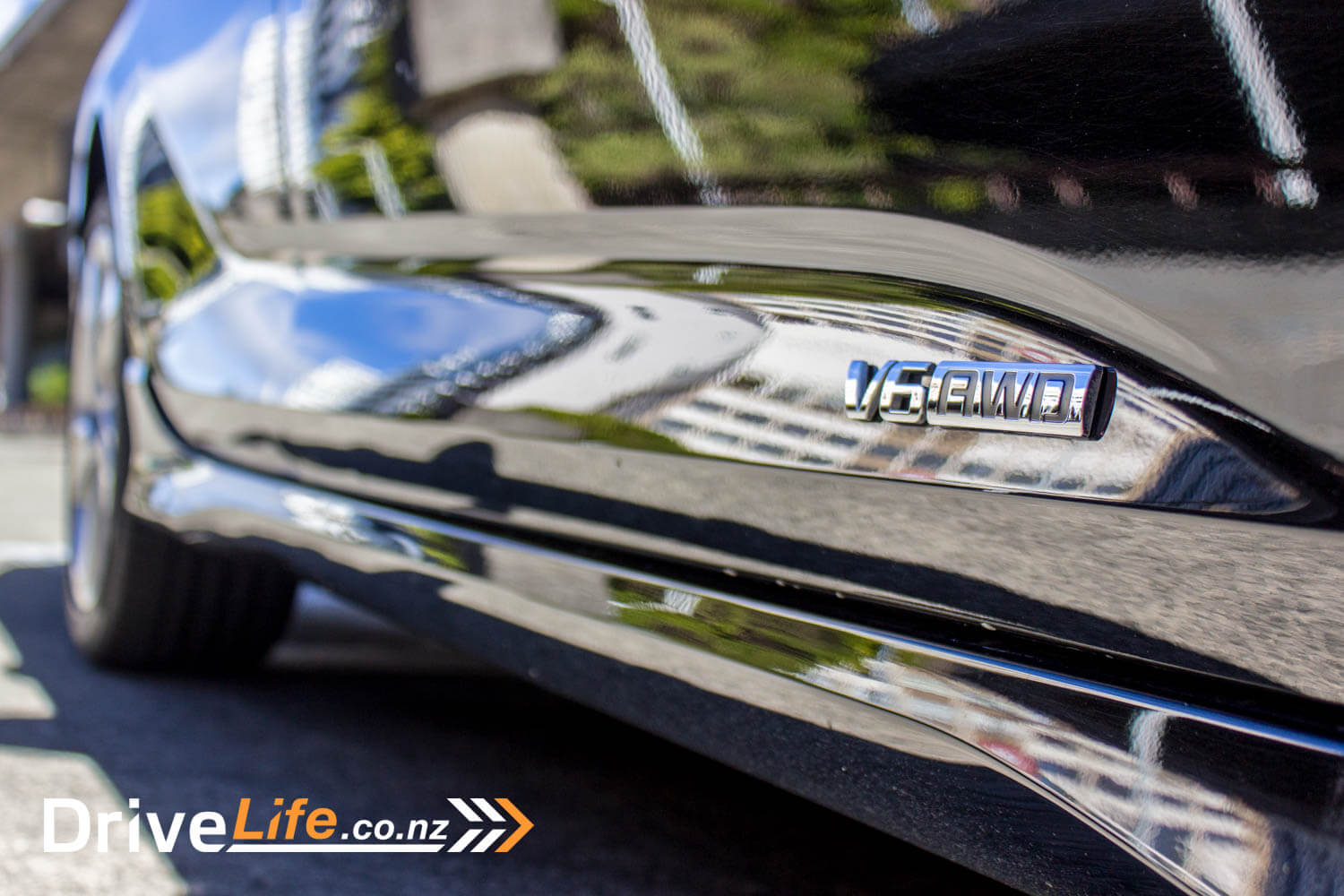
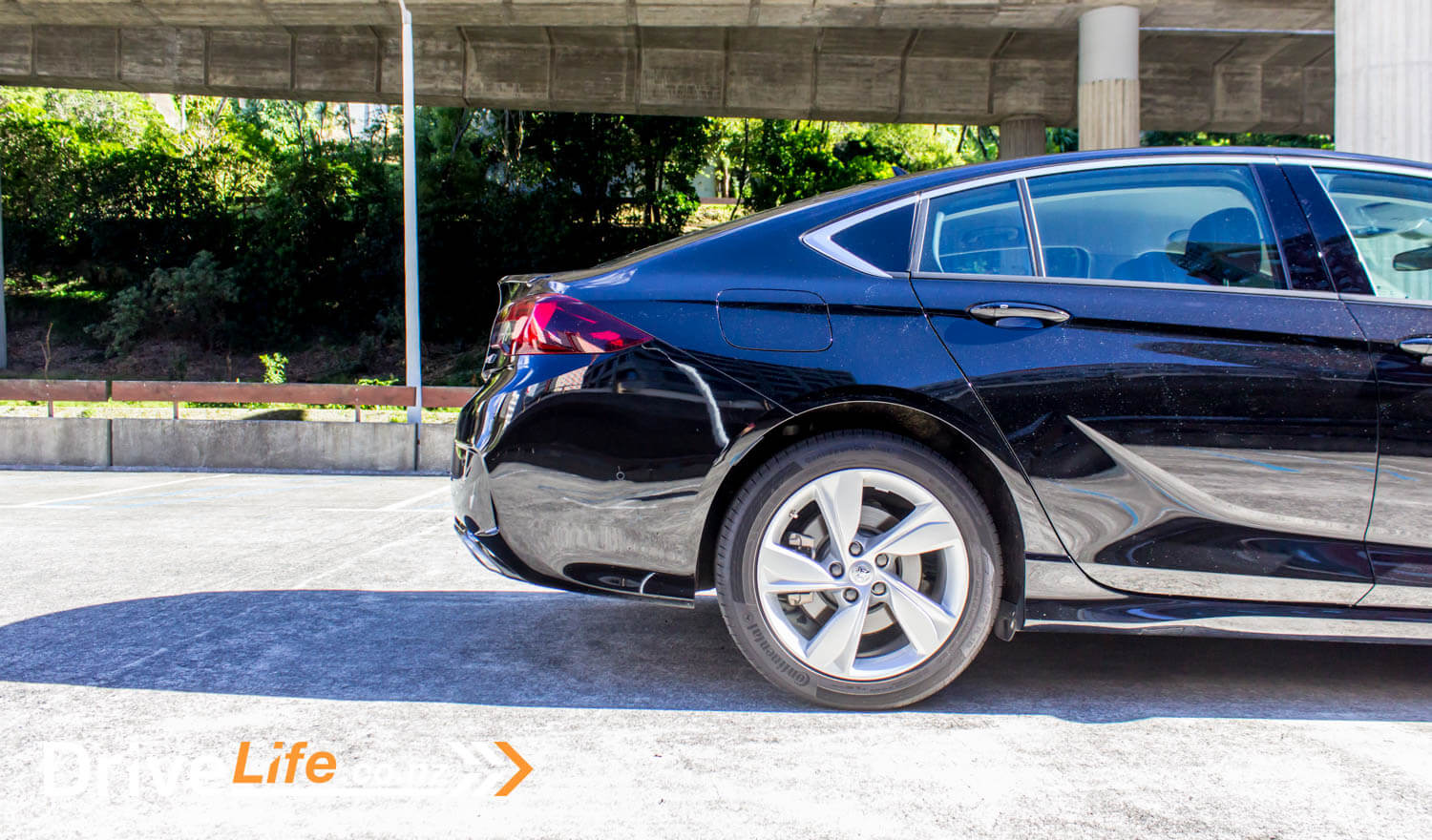
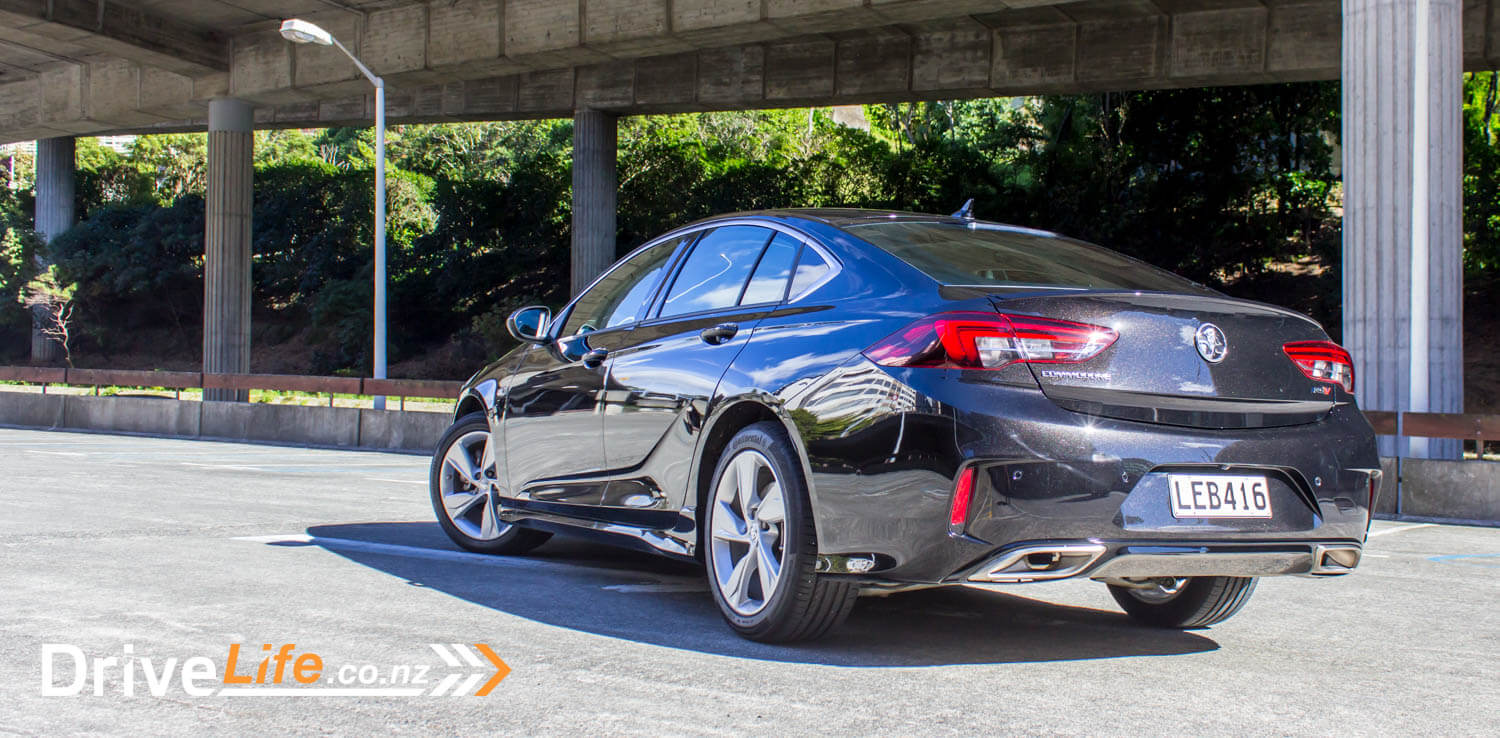
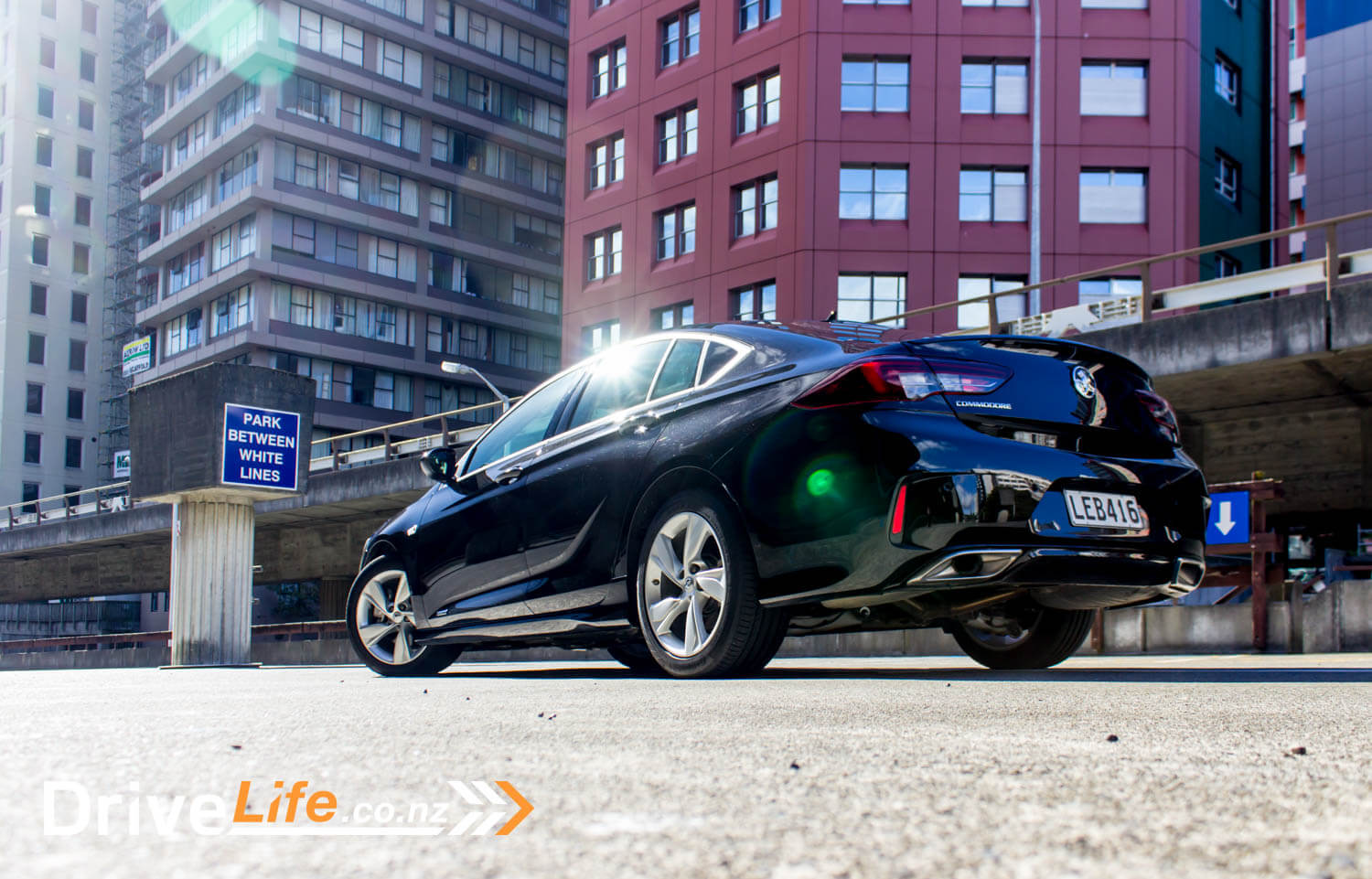
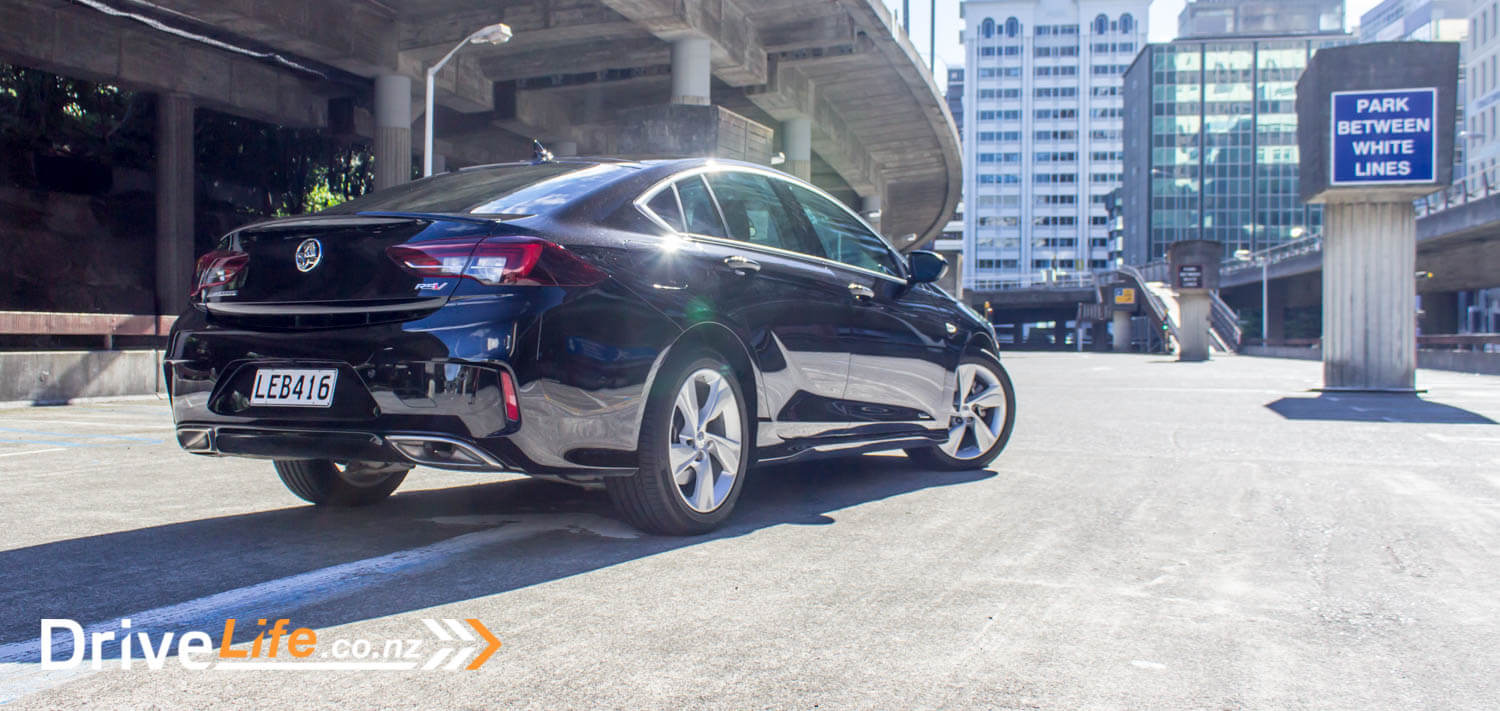


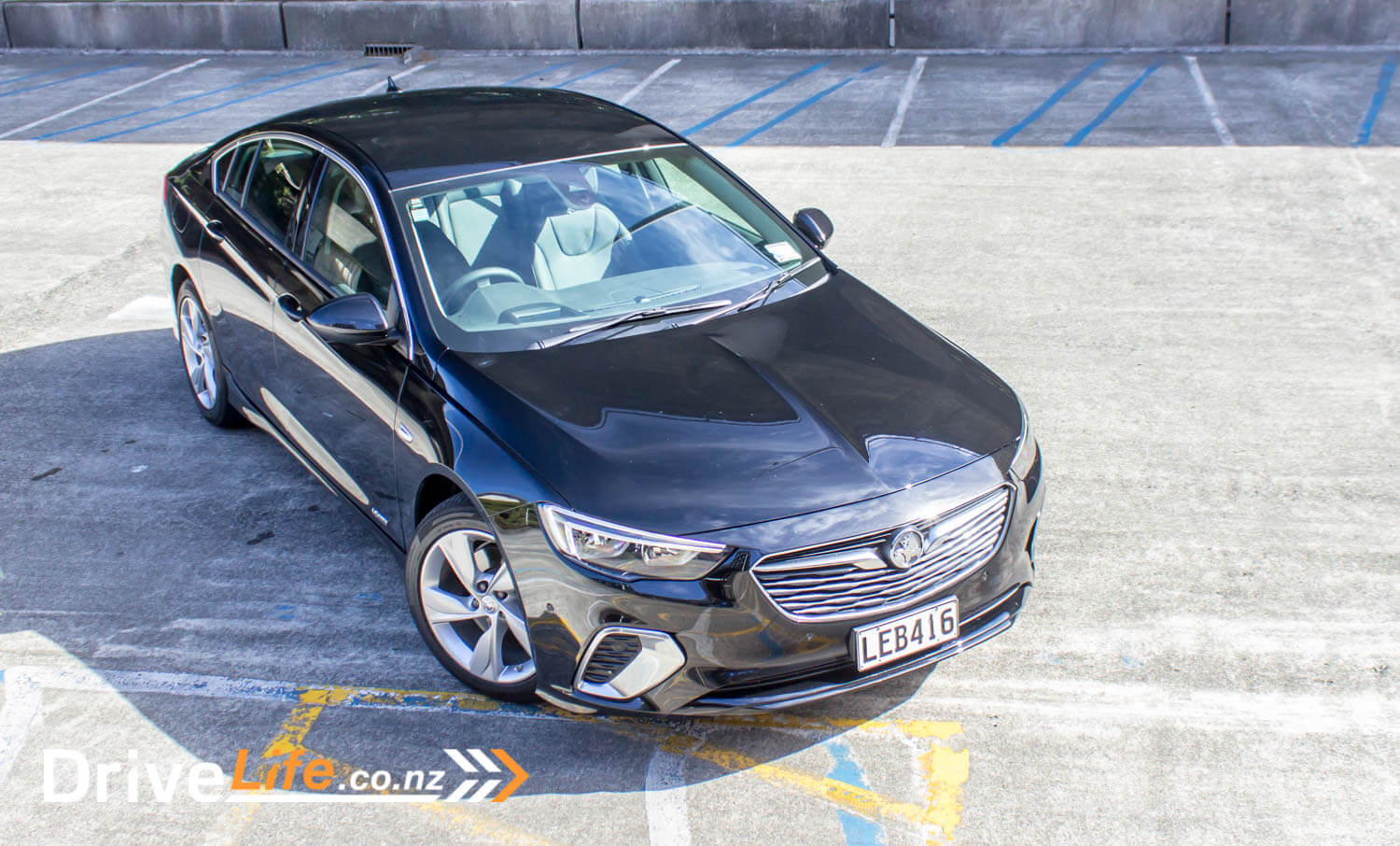











































We have one of these RSVs and I totally agree with everything in this review.
We are in love with our RSV!
Hi Karen
Glad you enjoyed the review. I’m sort of disappointed I didn’t buy one of these on the runout pricing, such a bargain. A very underrated car and great to hear you are loving it.
I agree that stop/start engines are very annoying, as they seem to behave randomly – sometimes turning off immediately when I am only stopping briefly at a Stop sign, and other times running for minutes at a traffic light only to switch off just as the lift goes green.
However, I have to say that your two issues have me totally miffed:
1) why on earth does anyone put their car into P and also put the hand brake on, when only sitting at a Red light? Why? I sometimes see people in front of me do this (you can see the reverse light flick on quickly) and scratch my head. Is it really that hard to just rest your foot on the brake pedal? And inevitably the traffic is delayed slightly as the car has to then reverse their unnecessary process when the lift goes Green. Just use the brake for goodness sake.
2) my biggest pet hate with stop/start systems is the delay for the engine to switch back on. This is not just a pet peeve, it is a safety issue – if you’re pulling into traffic at a roundabout or T-intersection then that delay can cause accidents. Even worse when it’s combined with the infuriating delay in DSG gearboxes. So if you insist on being a weirdo and putting your car into Park at a red light, then absolutely it makes sense for the engine to restart as soon as it knows you are heading towards Drive, so as not to delay the traffic or cause accidents.
If you are going to complain about anything, please do so about manufacturers ridiculous obsessions with DSG gearboxes – they are more complicated (so expensive maintenance), laggy from take-off and only really benefit performance cars when their deluded owners think that shaving a 10th of a second off a gear shift is important for their social standings…